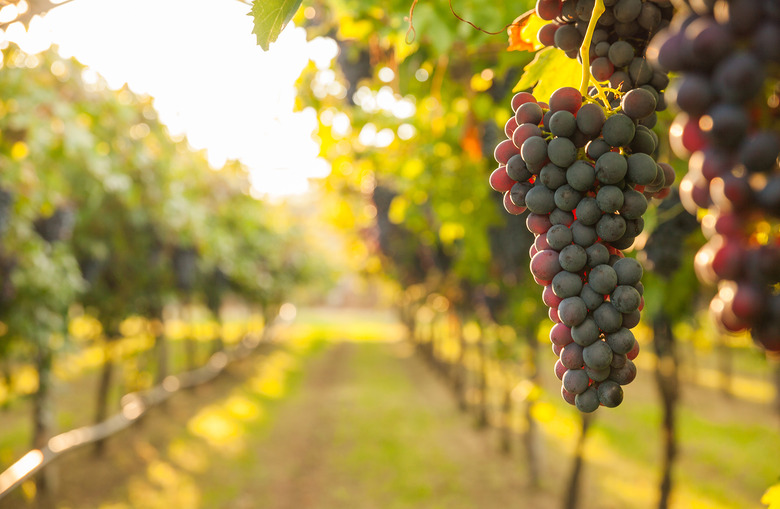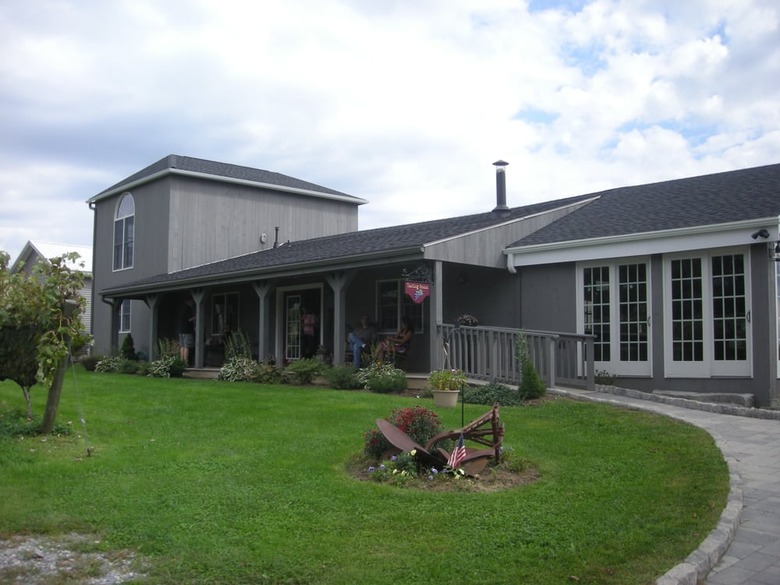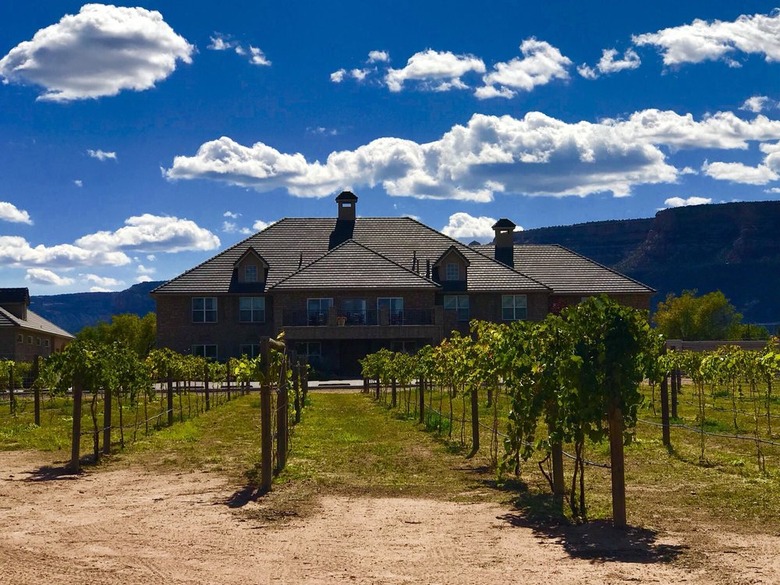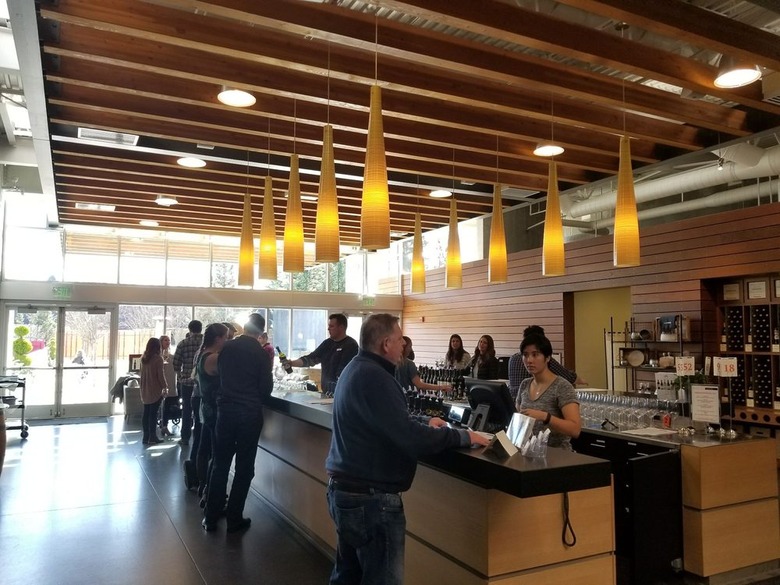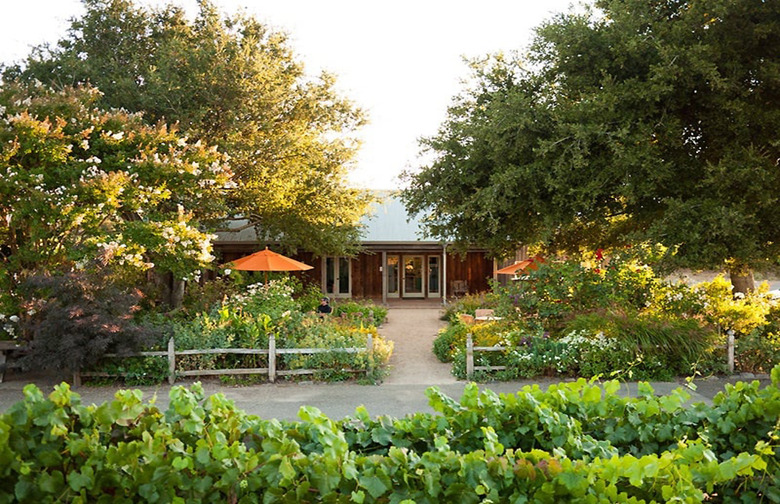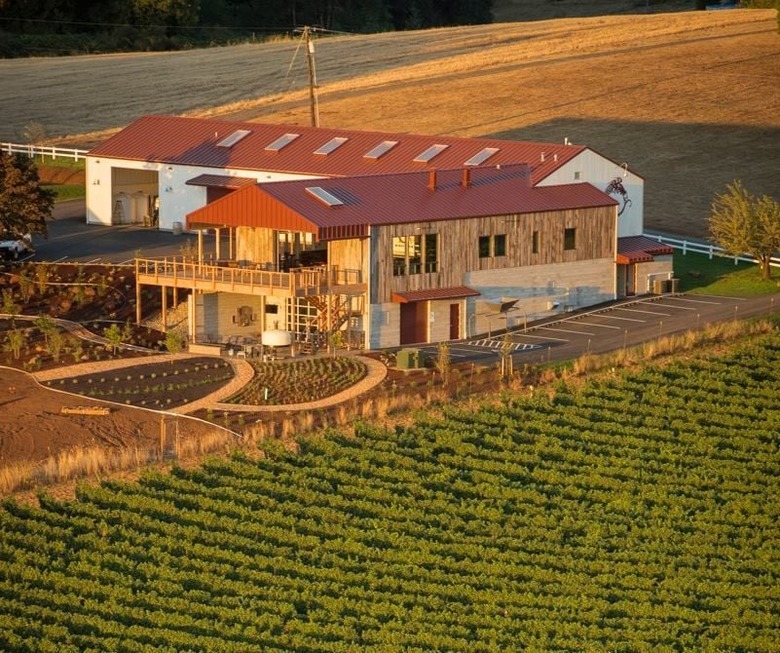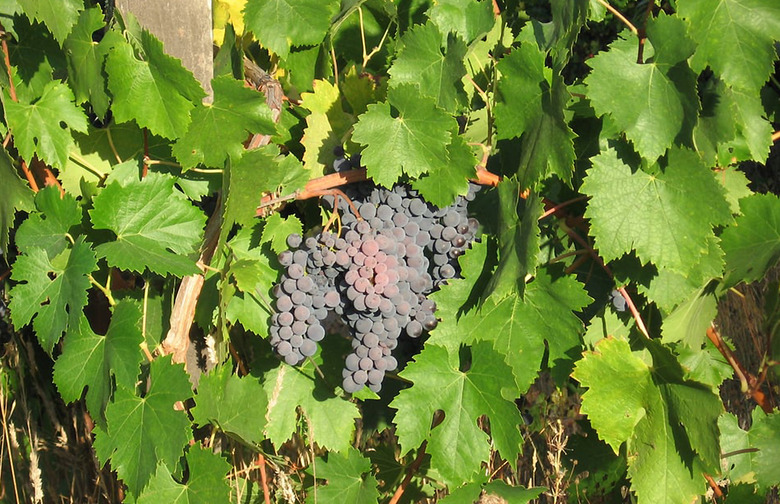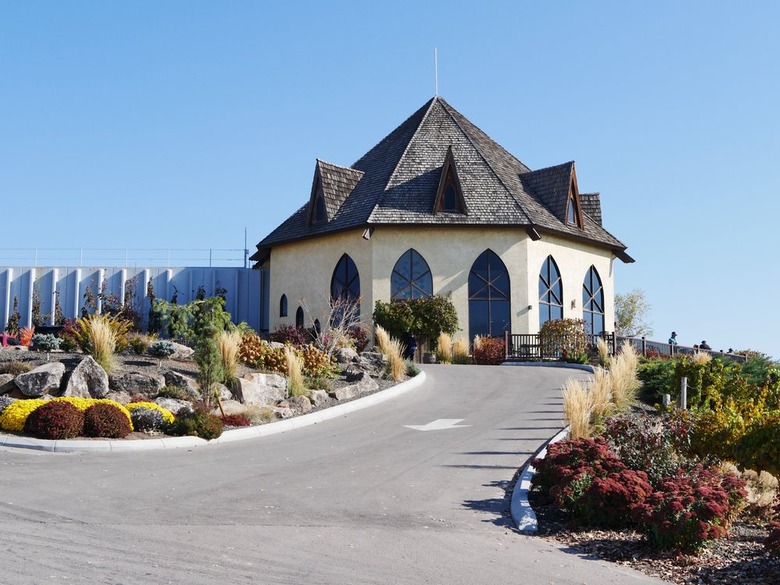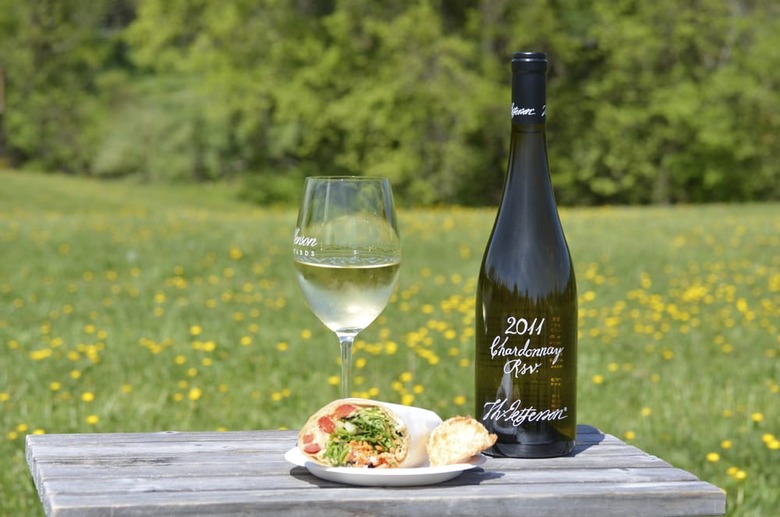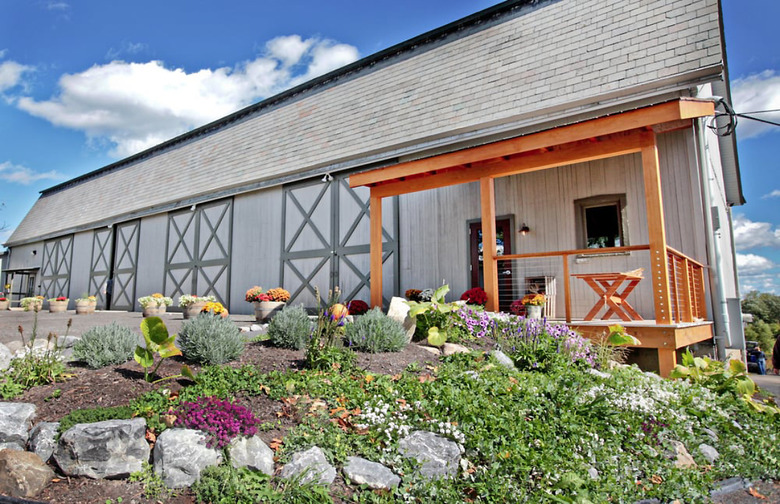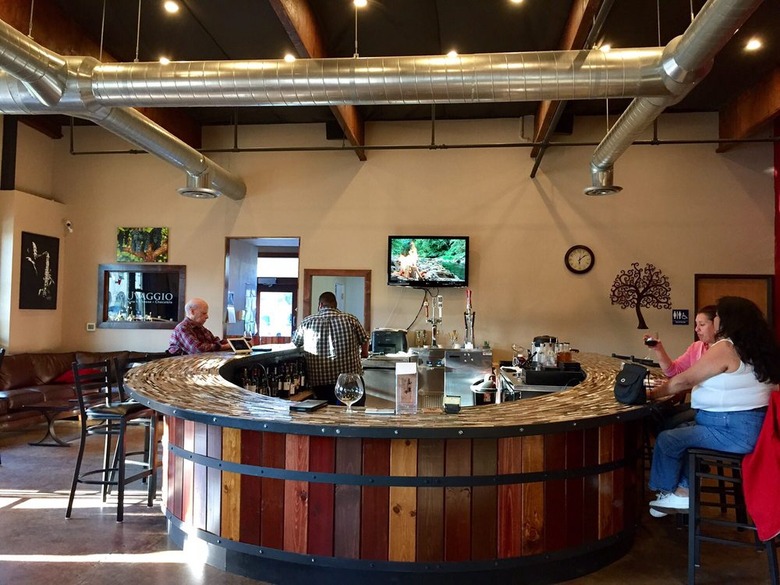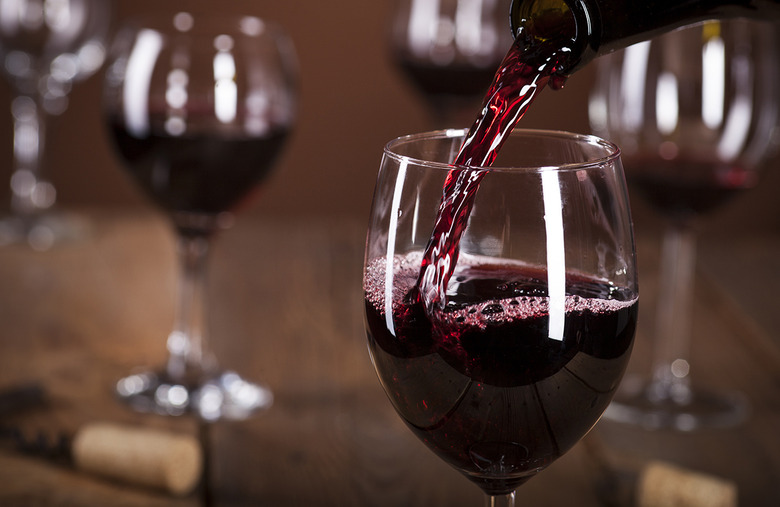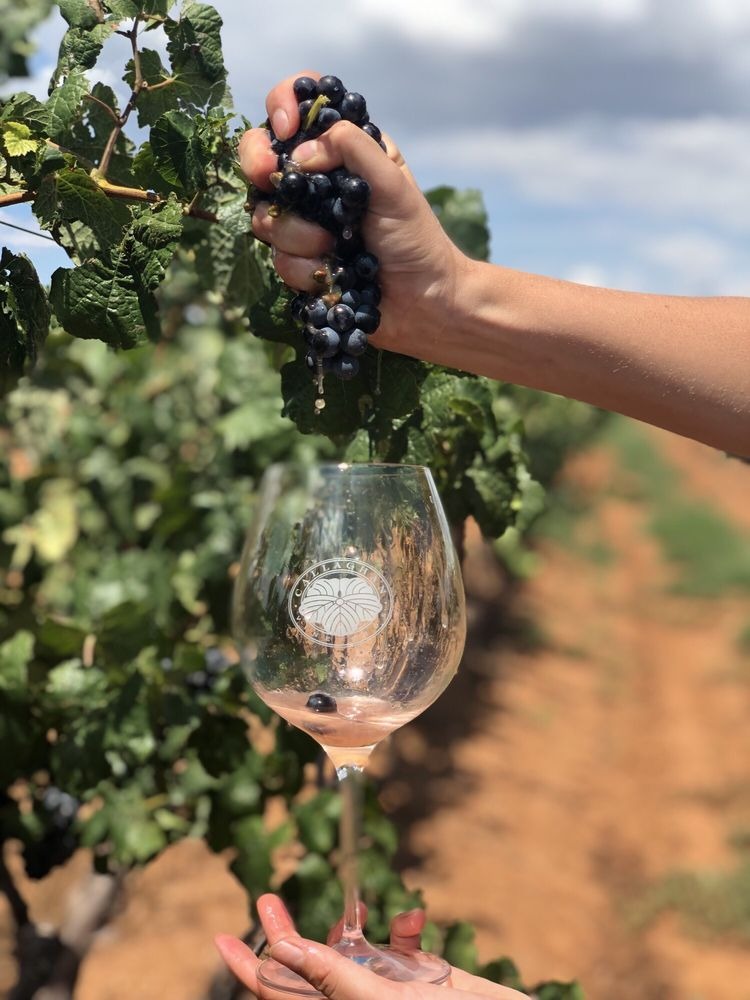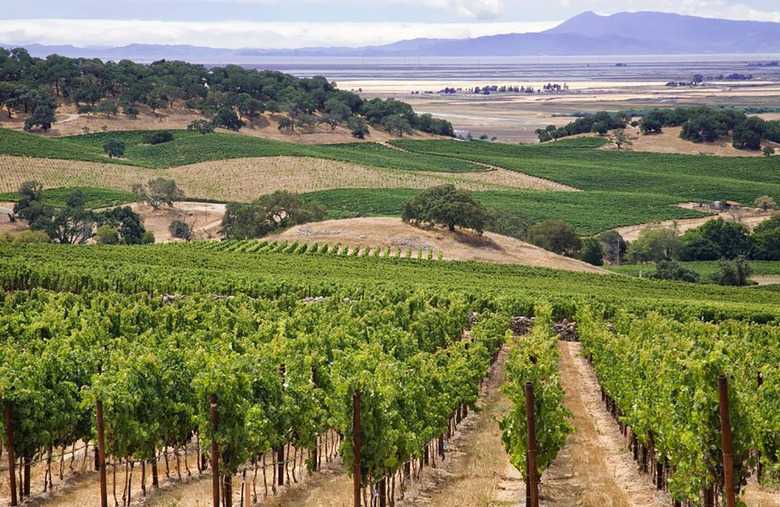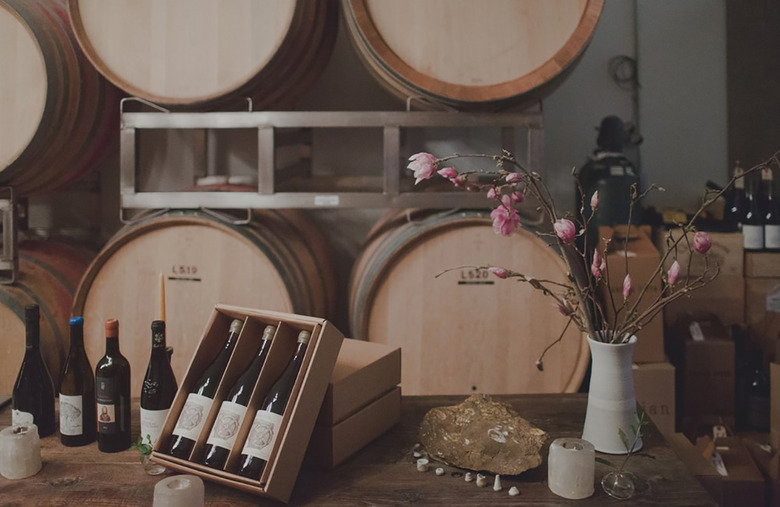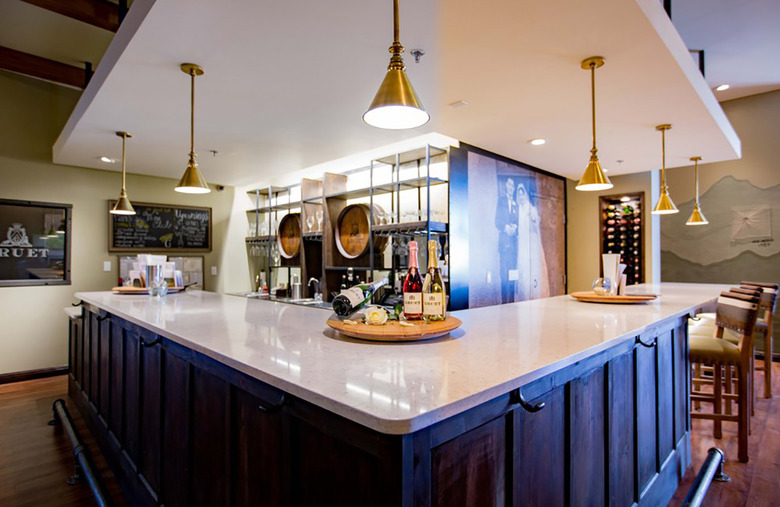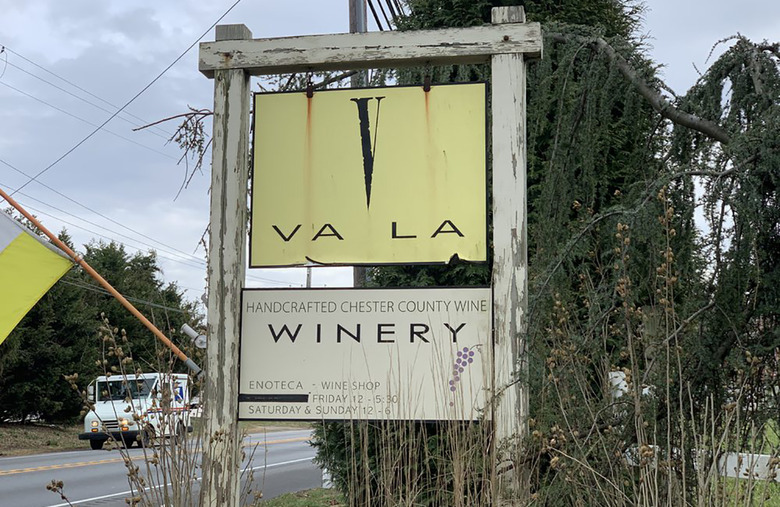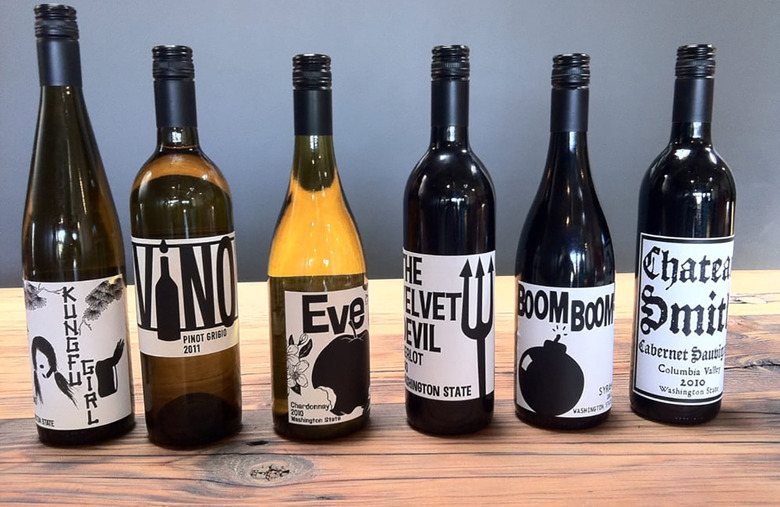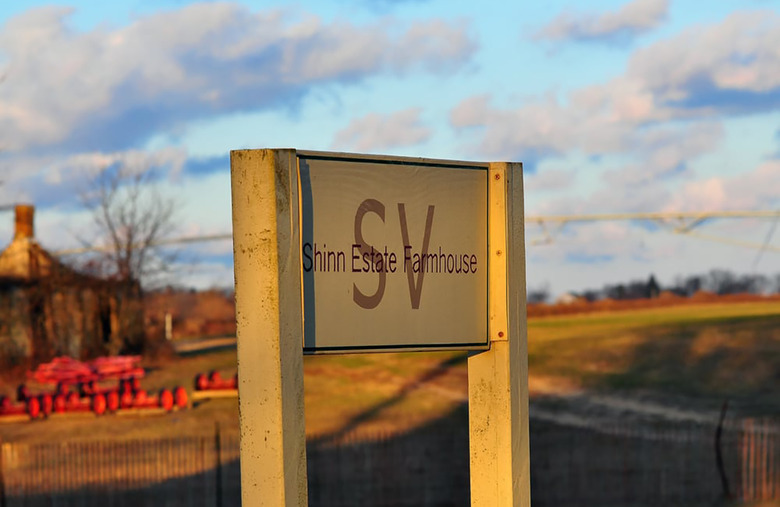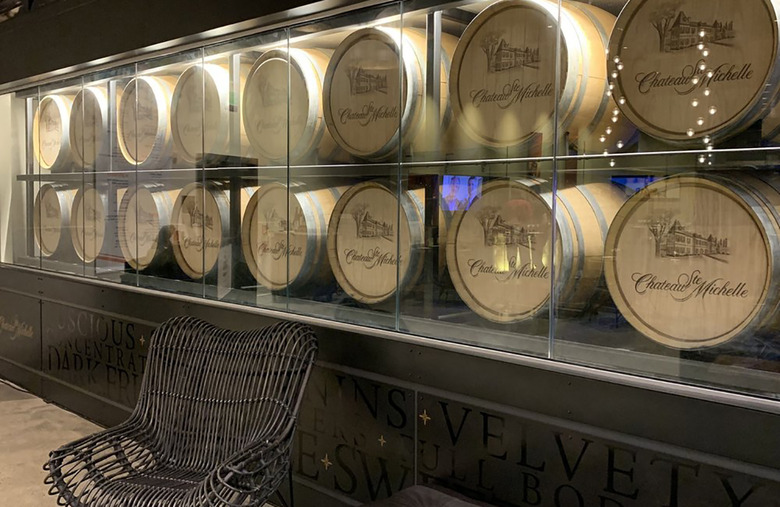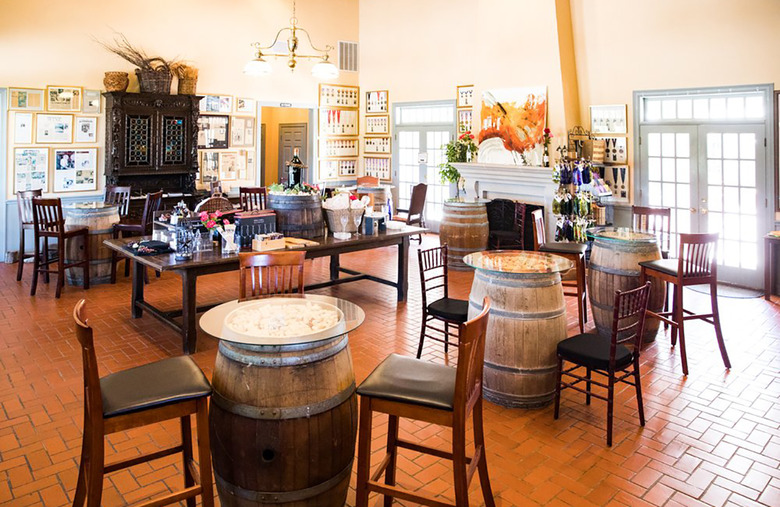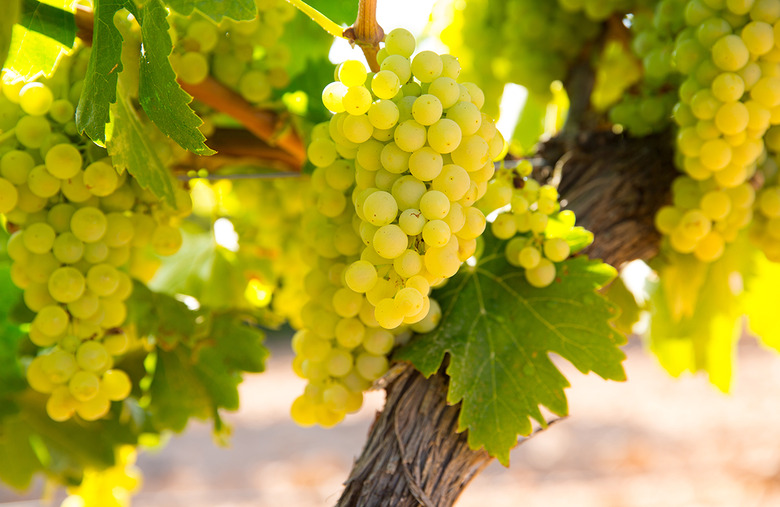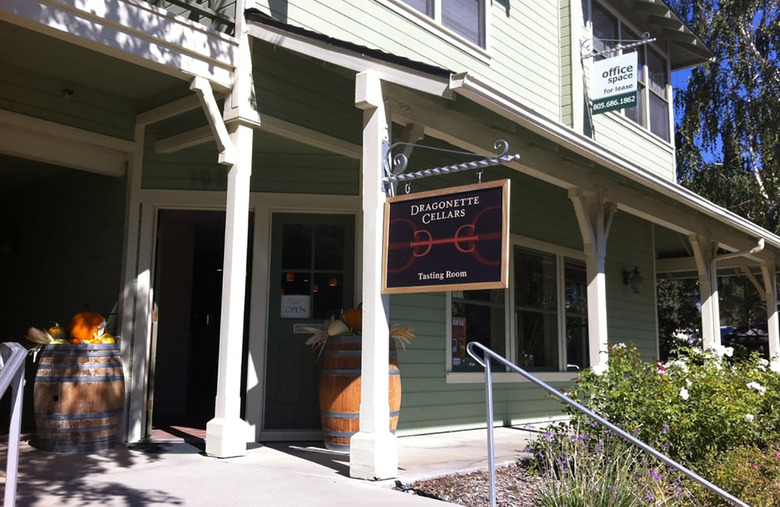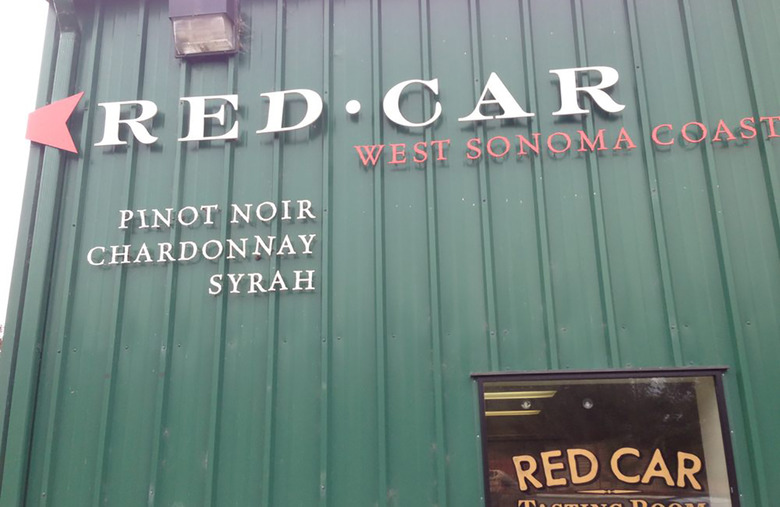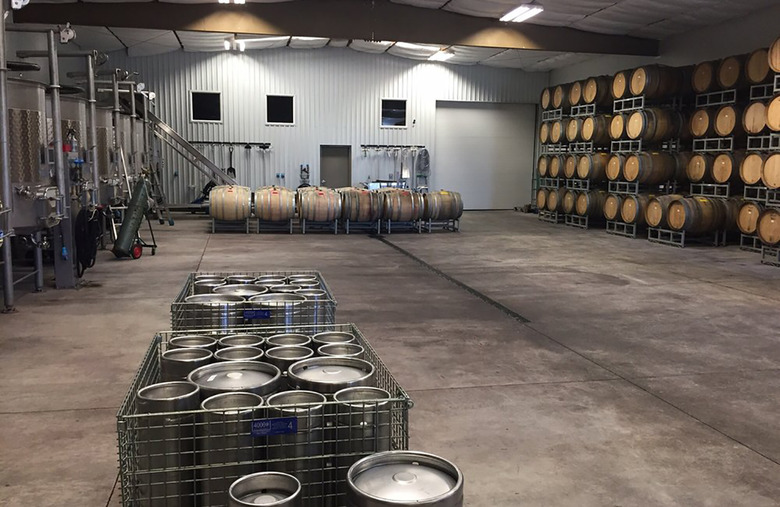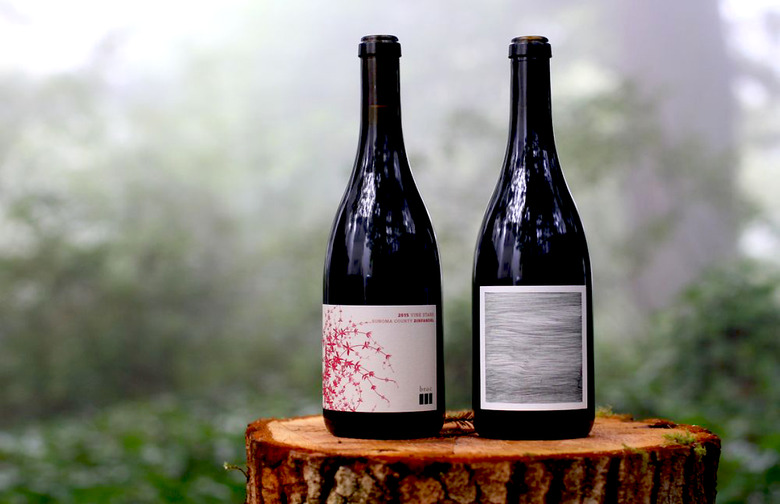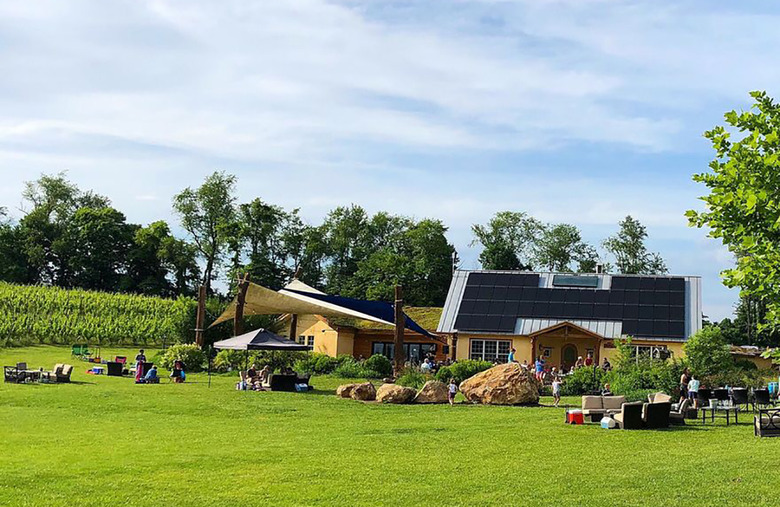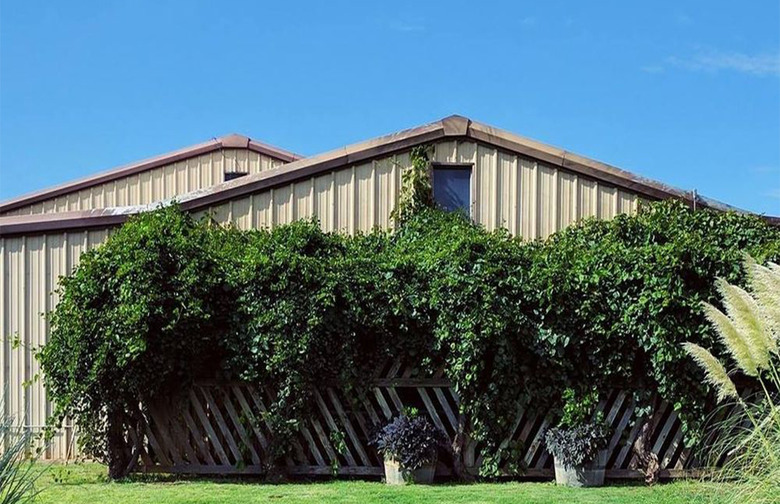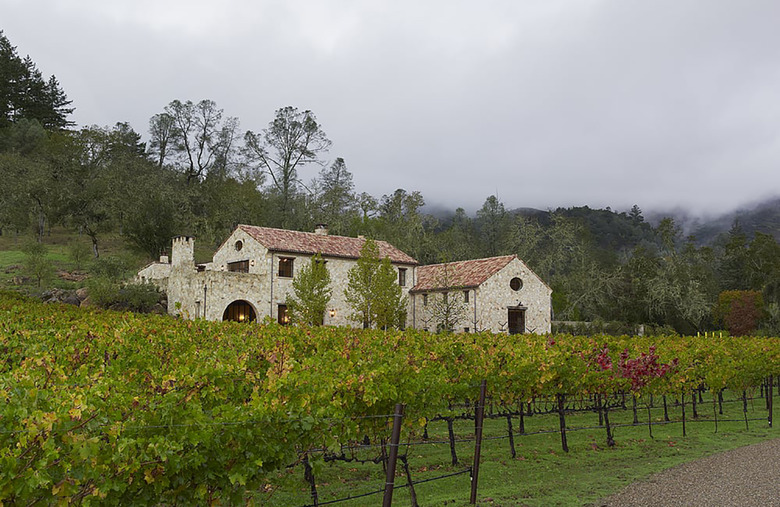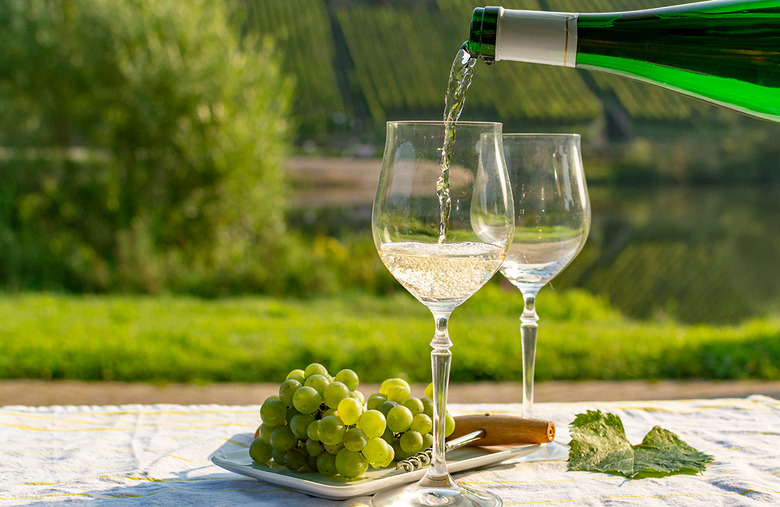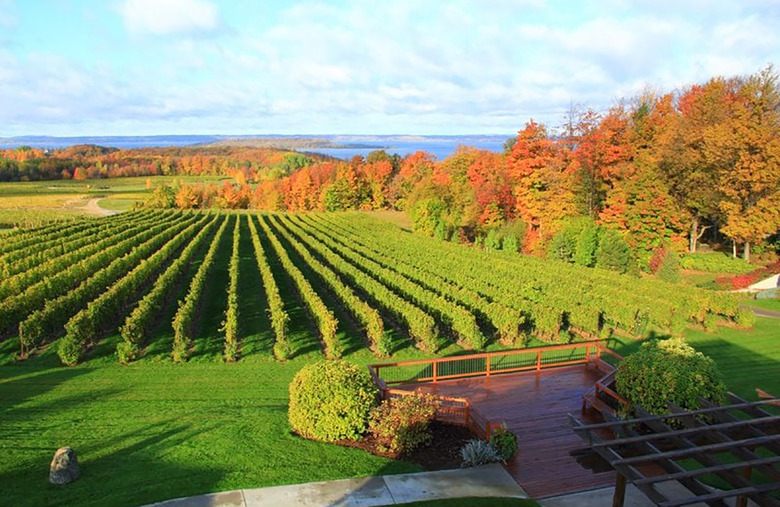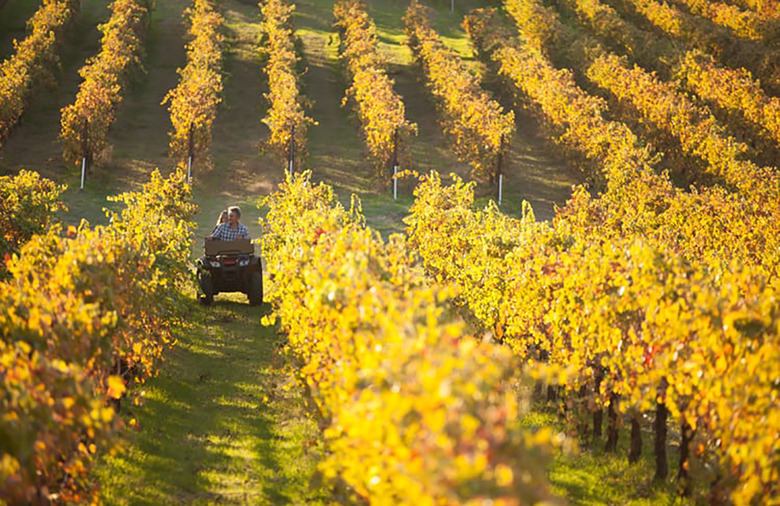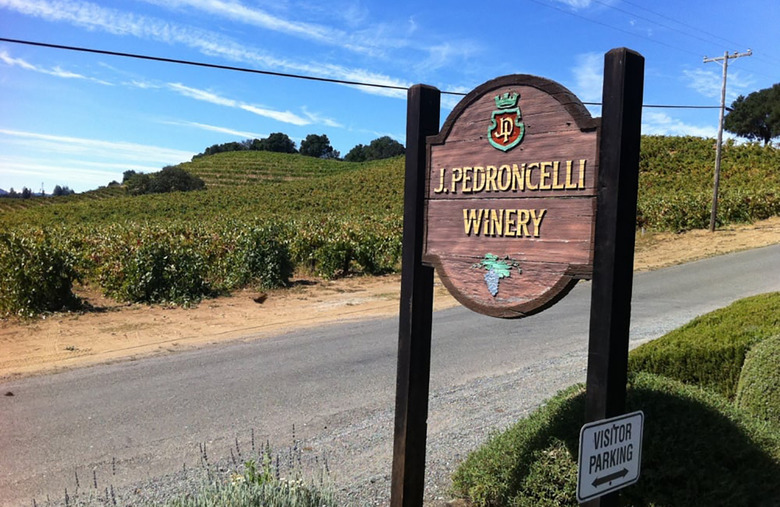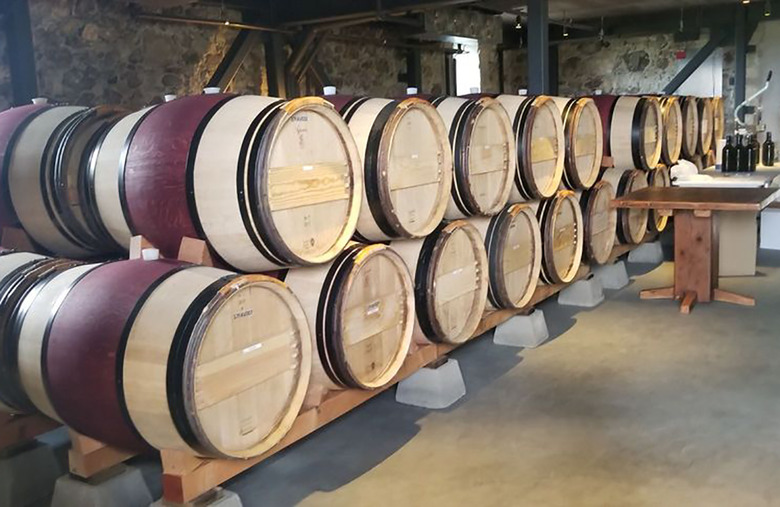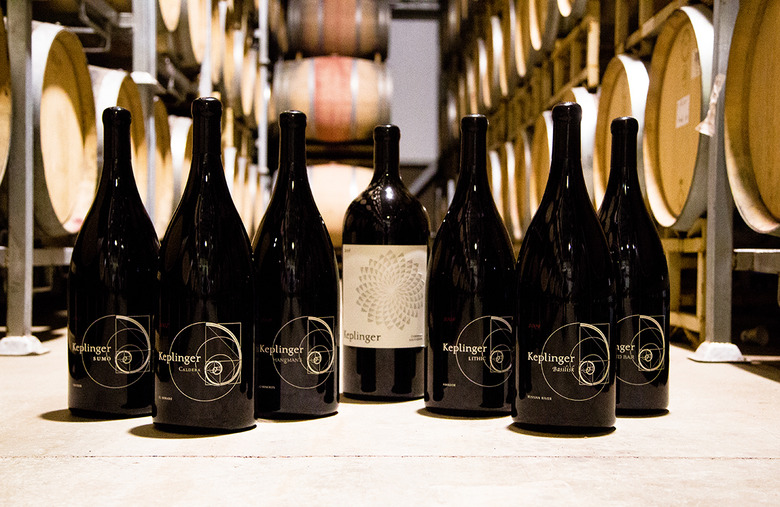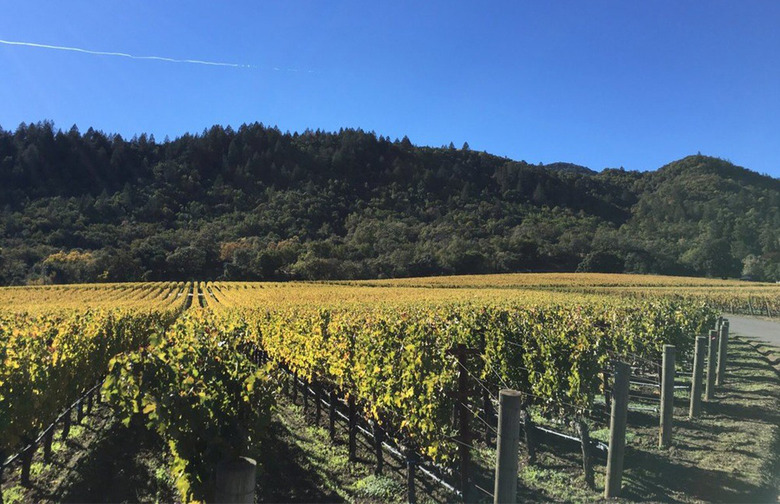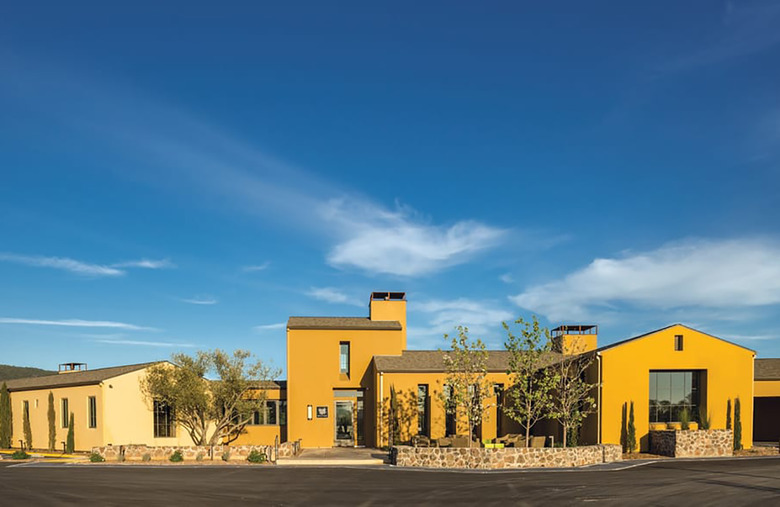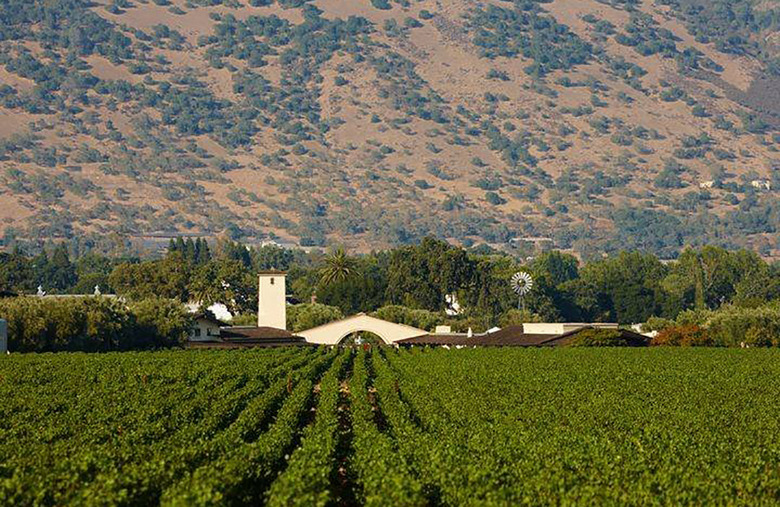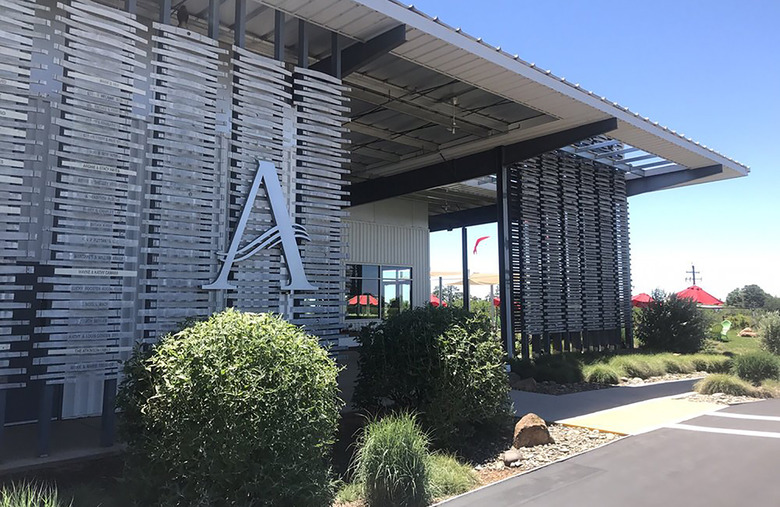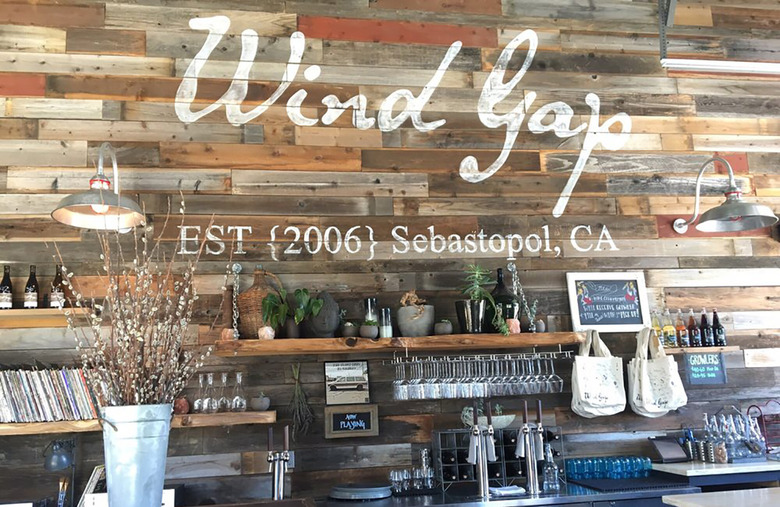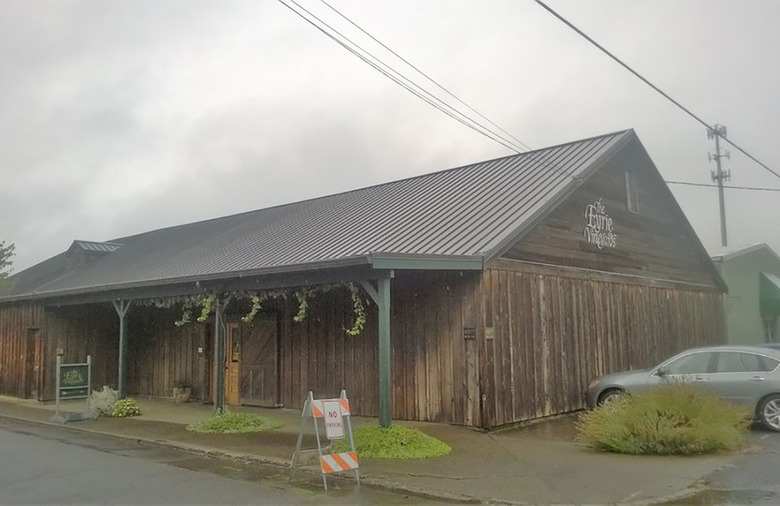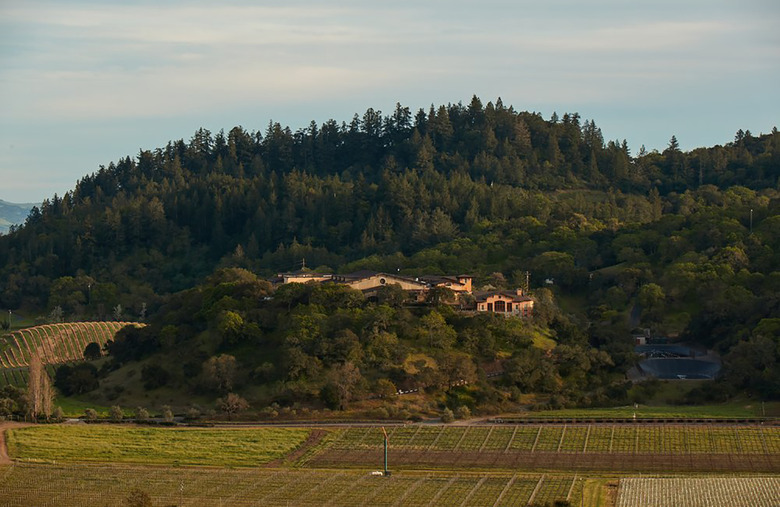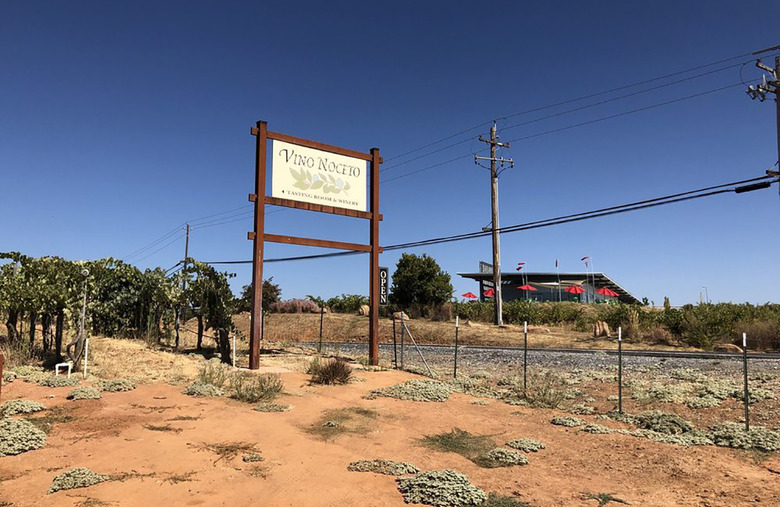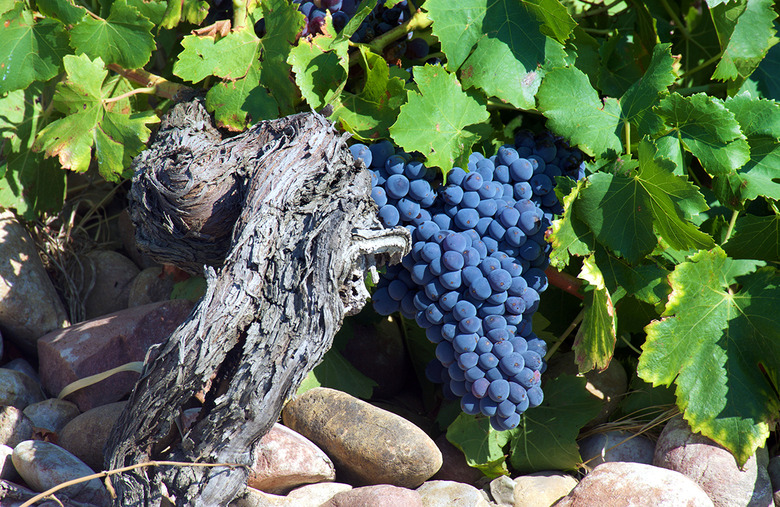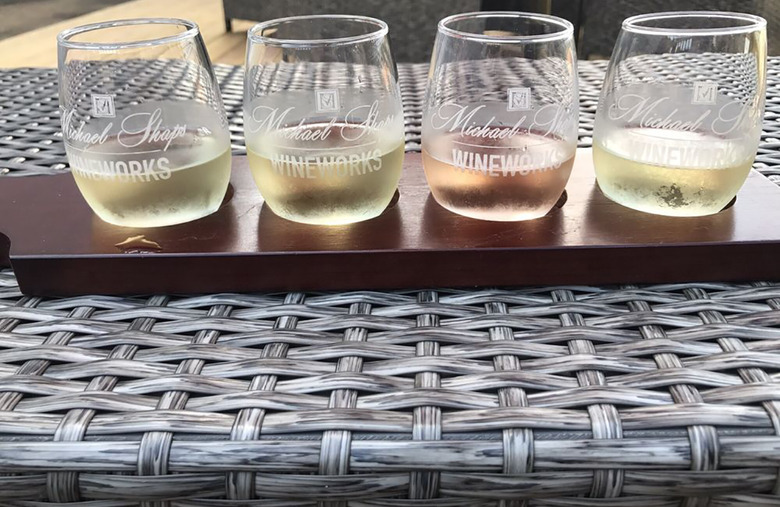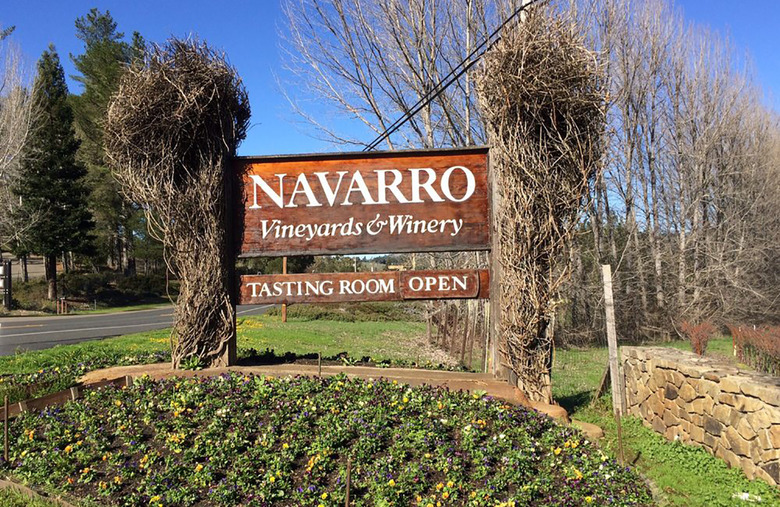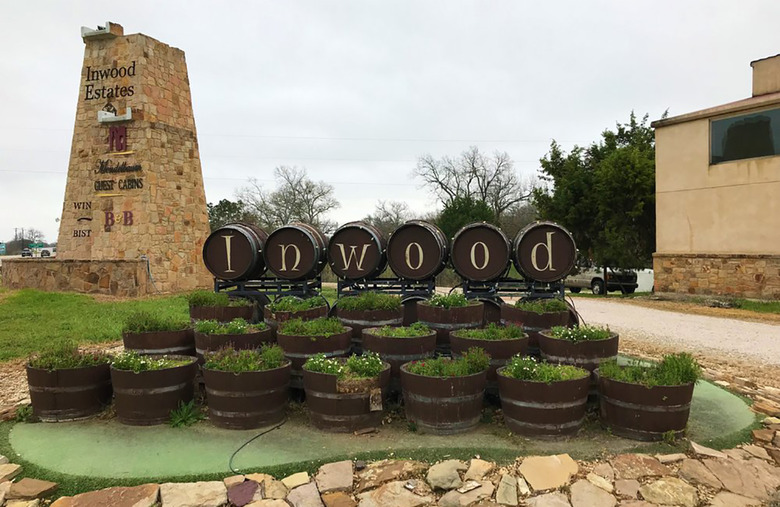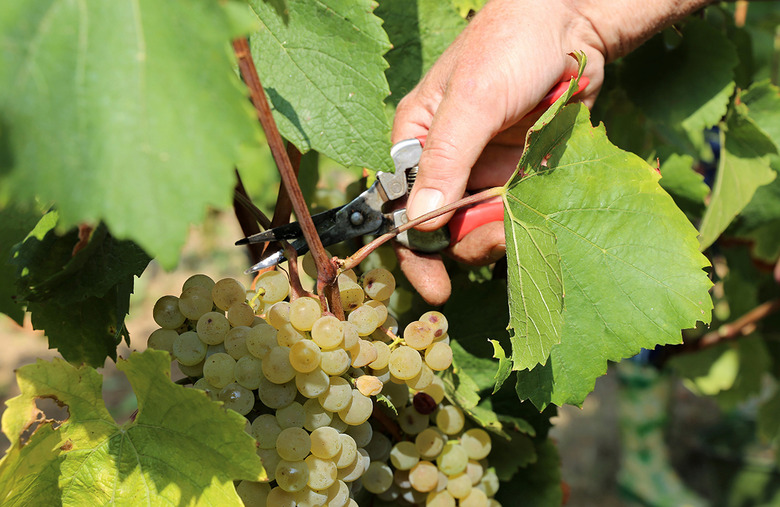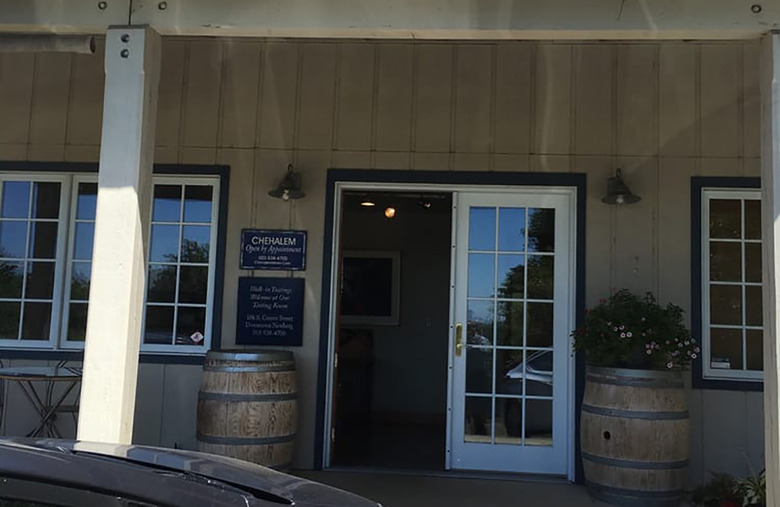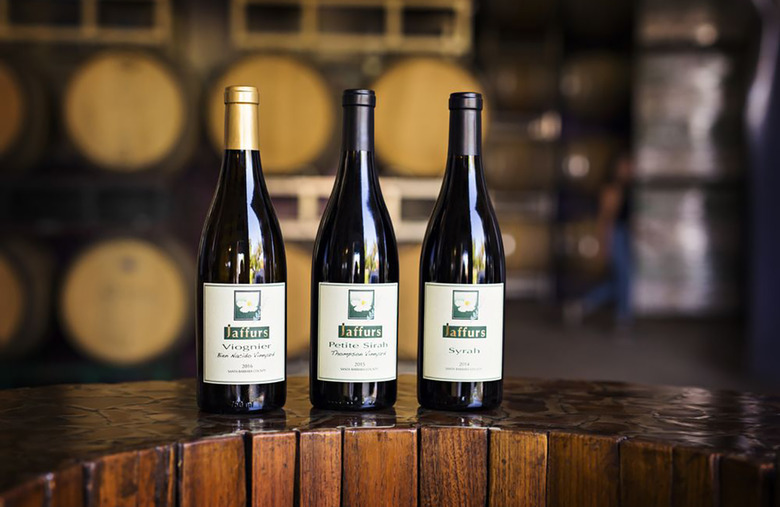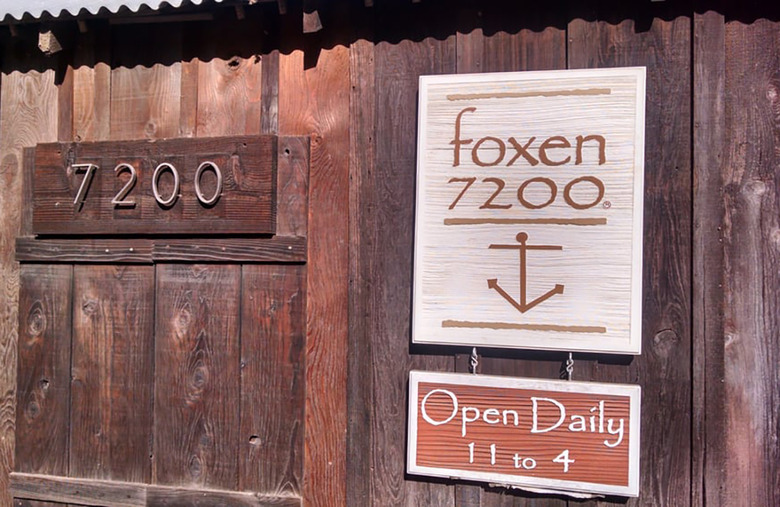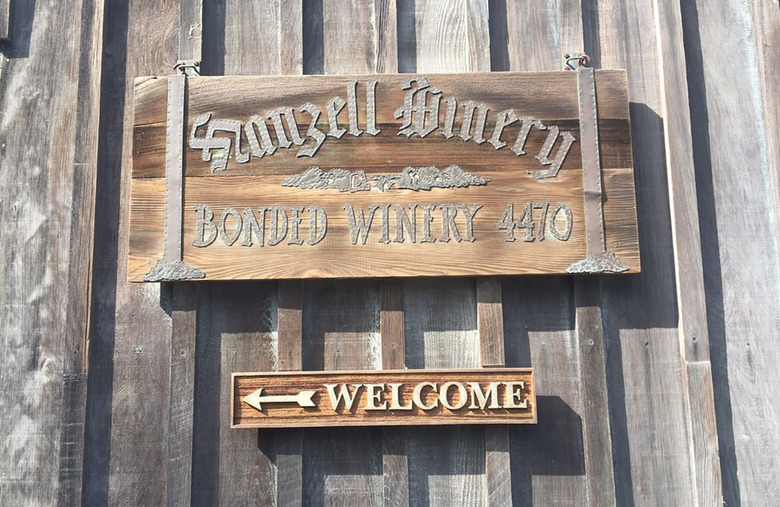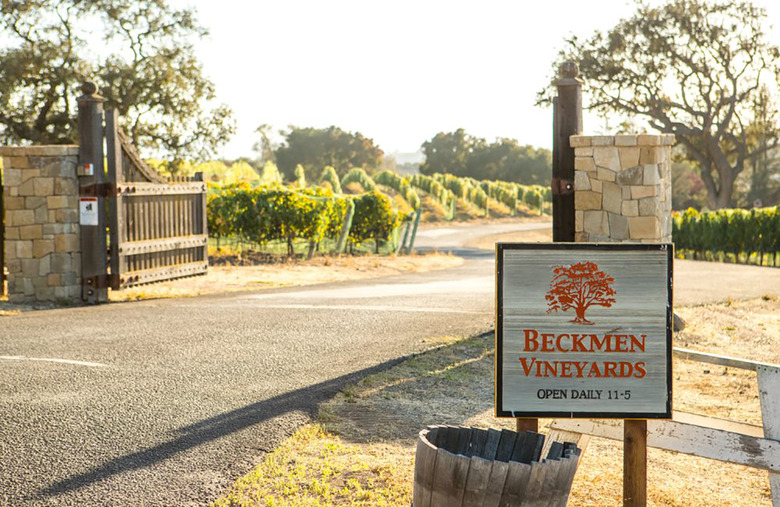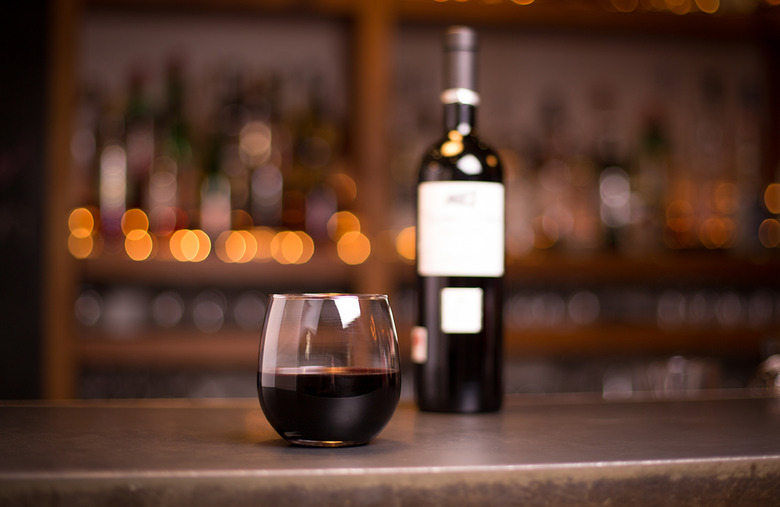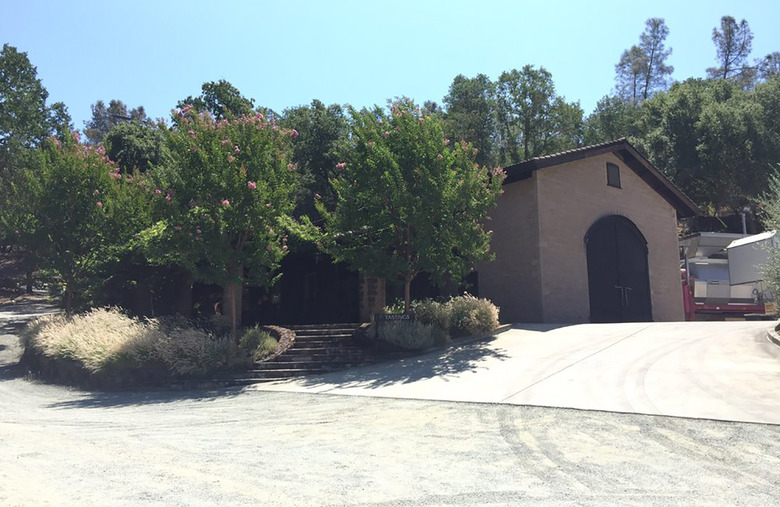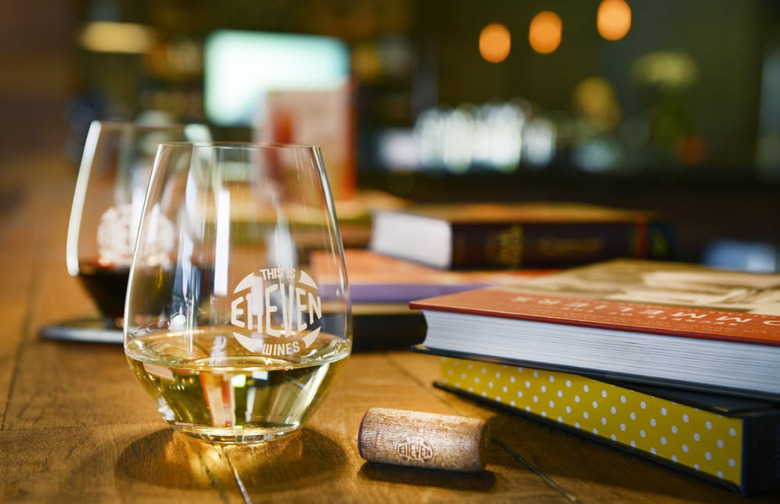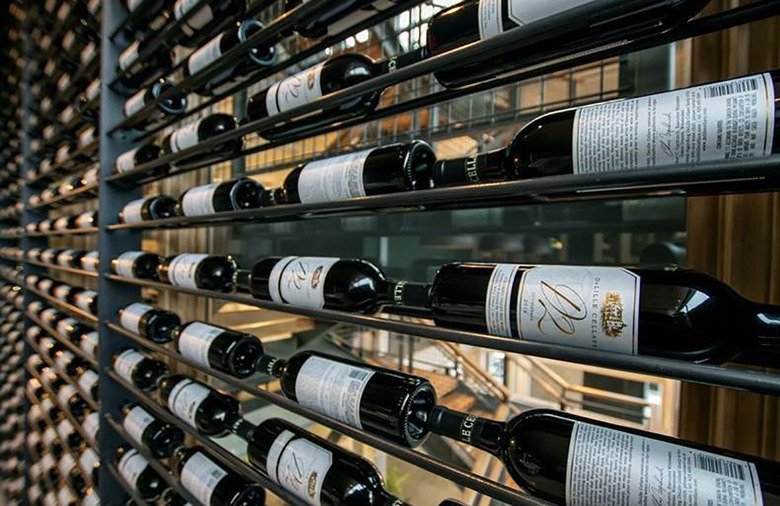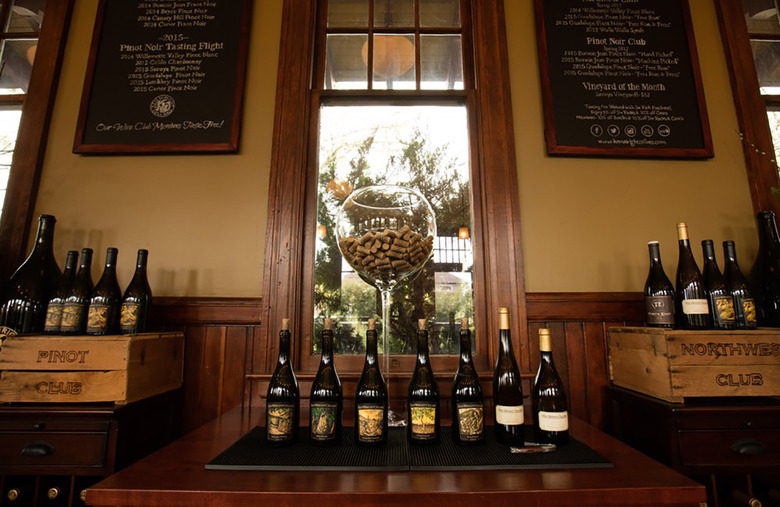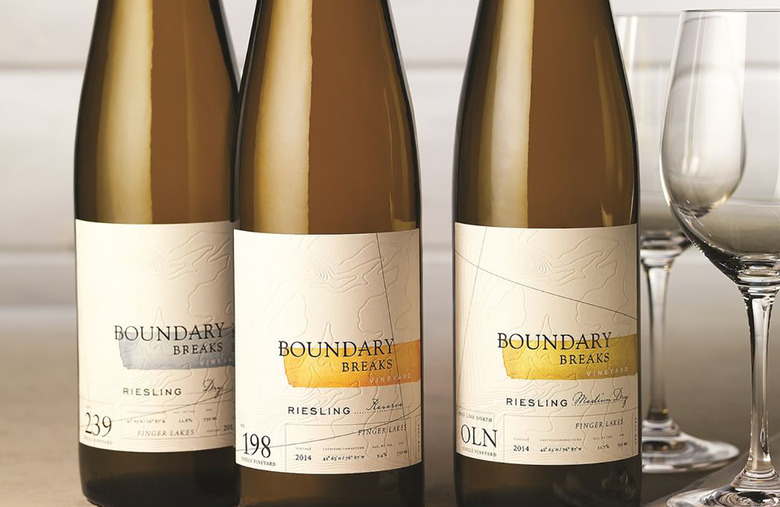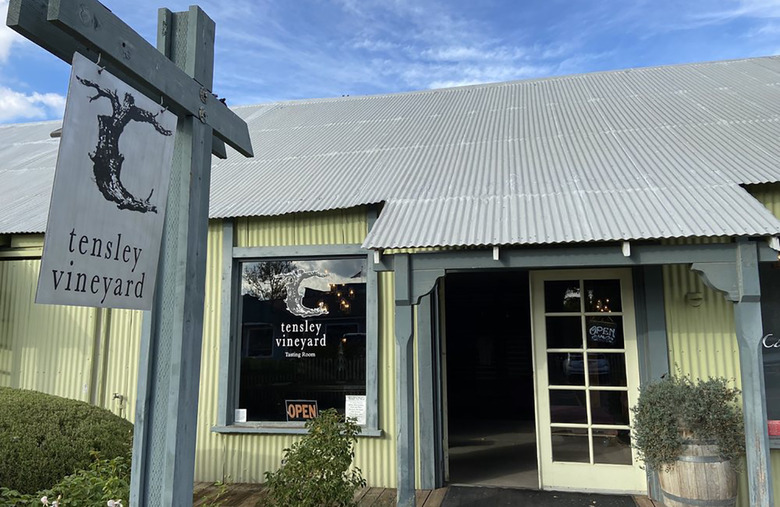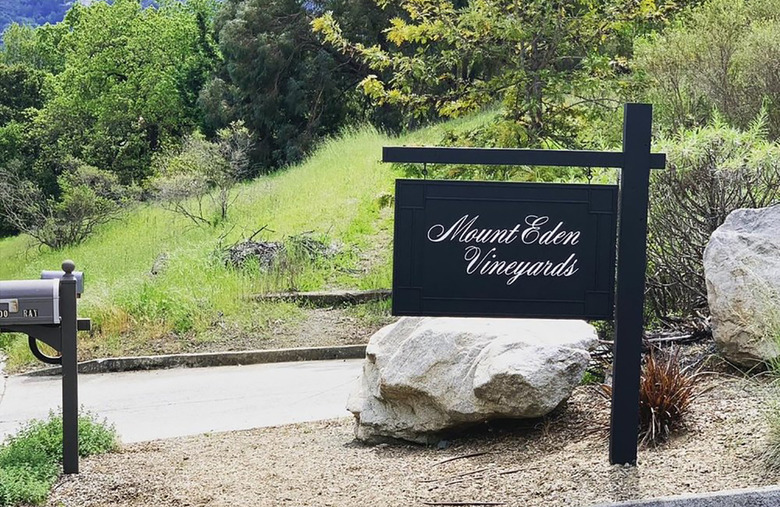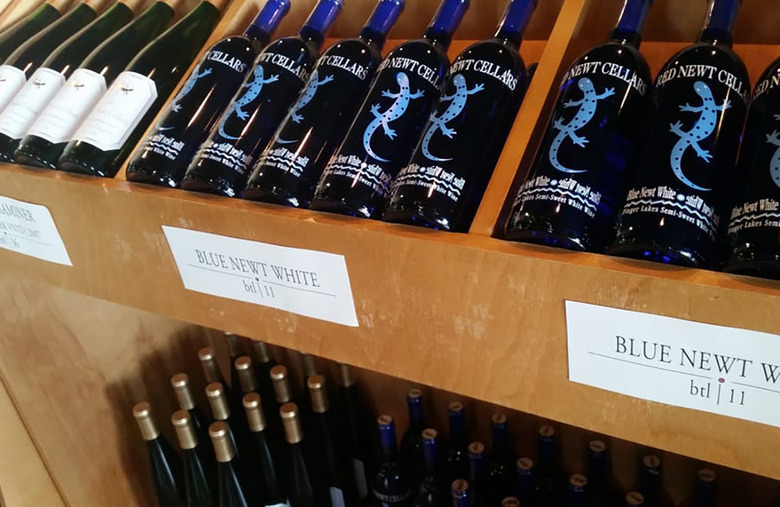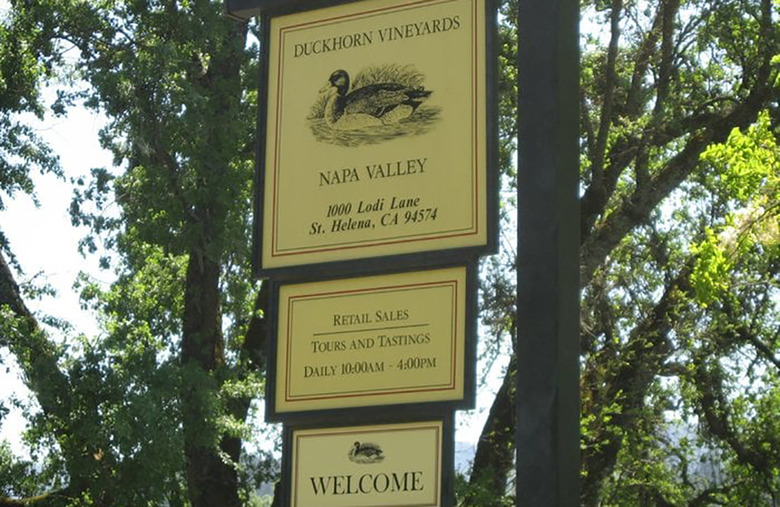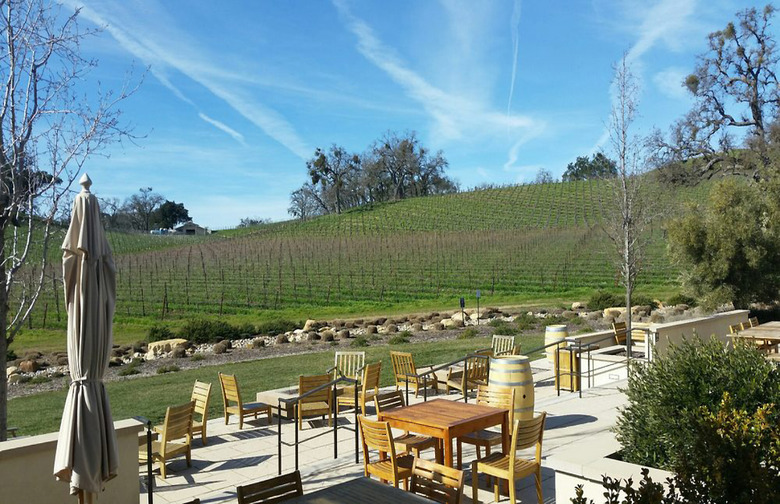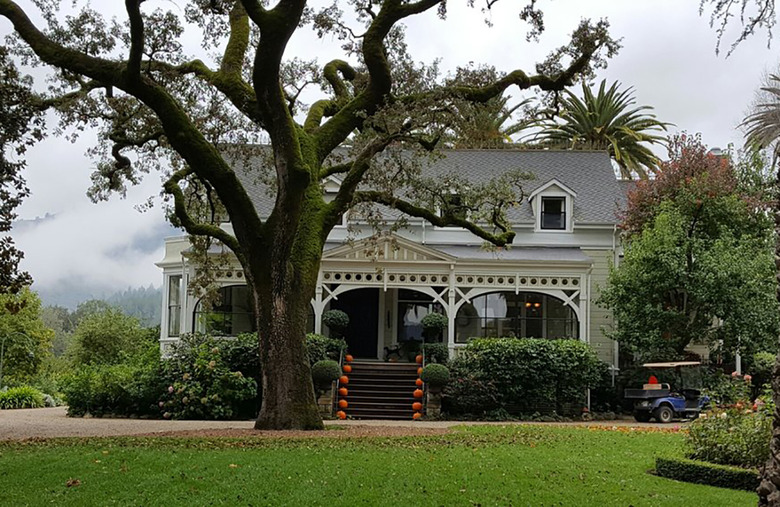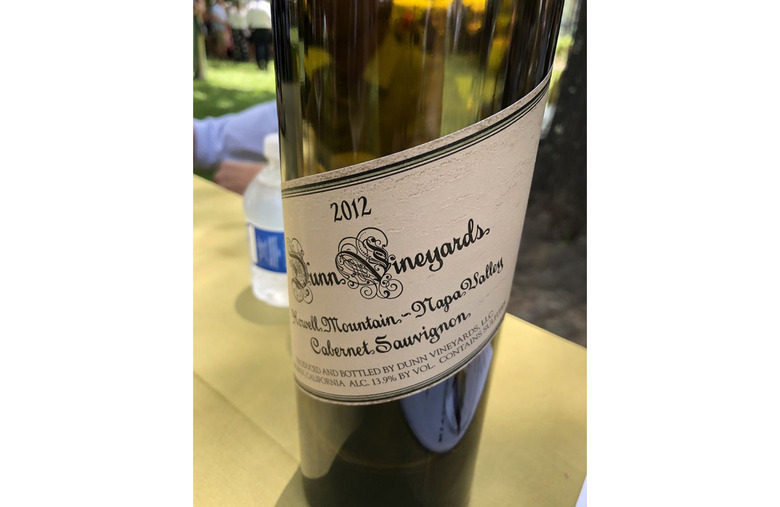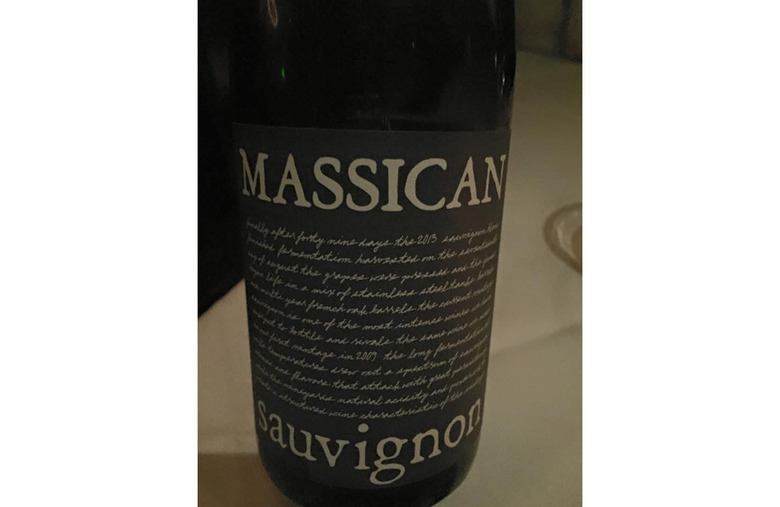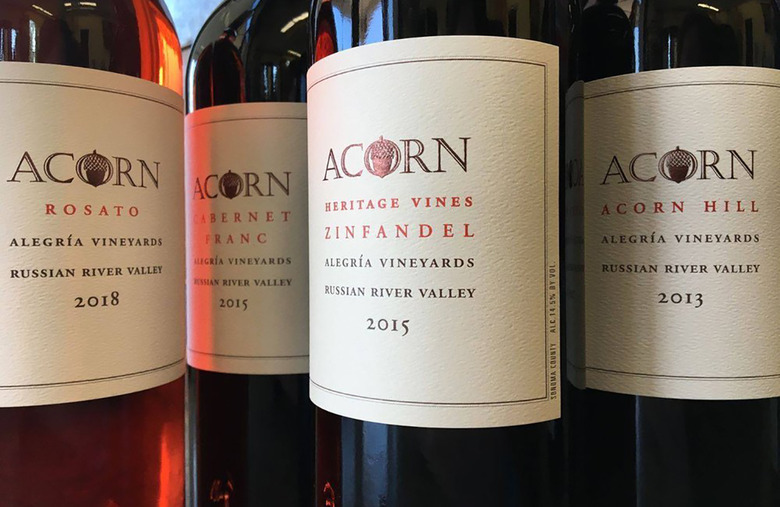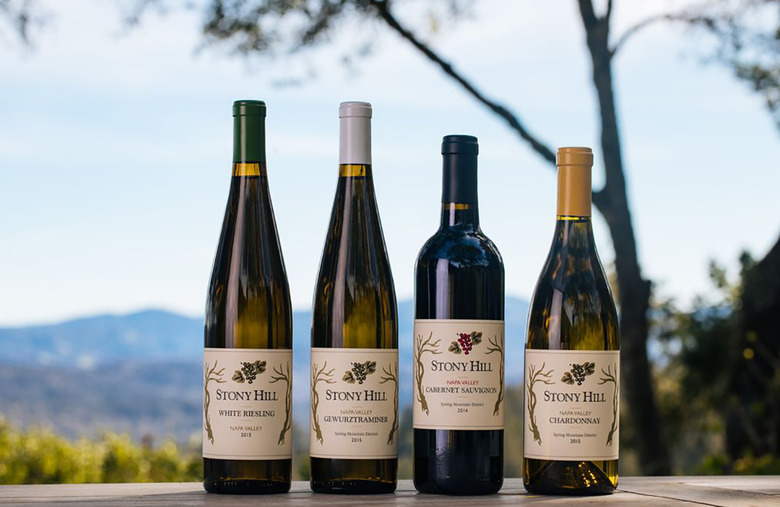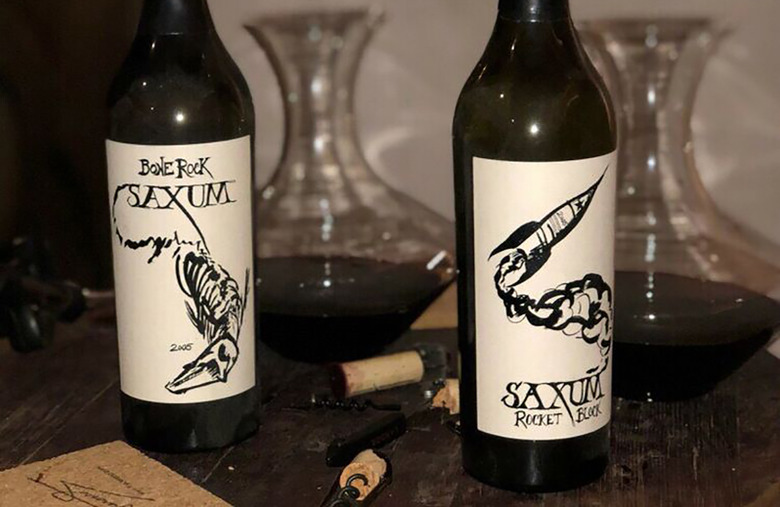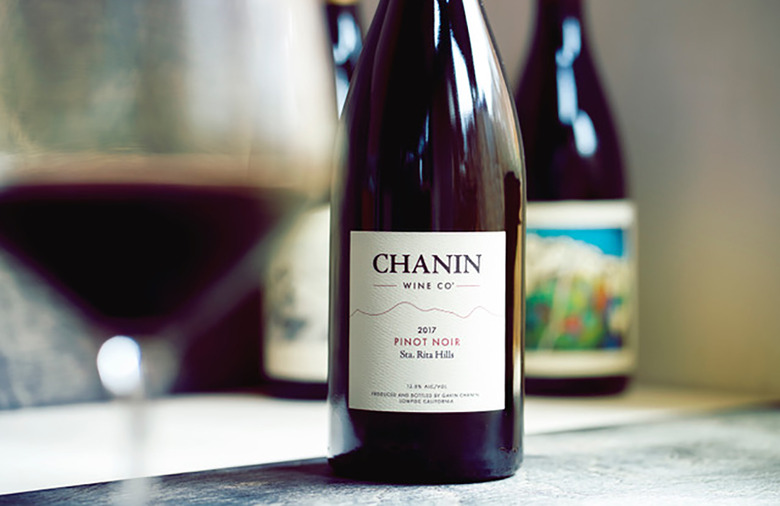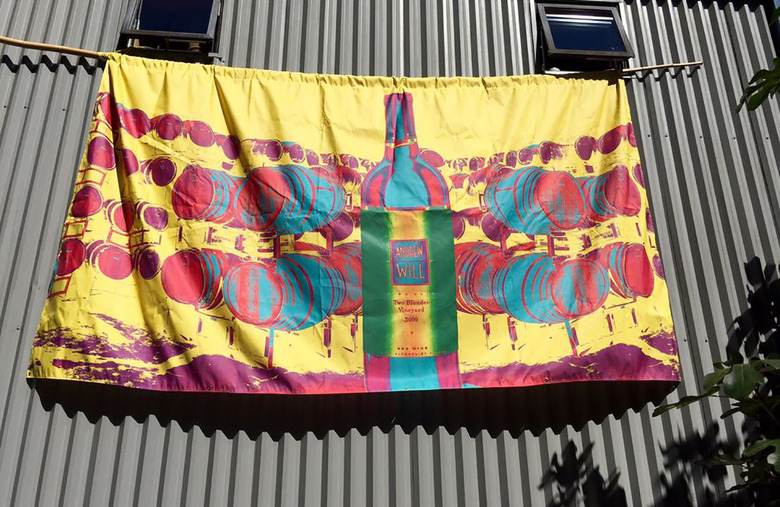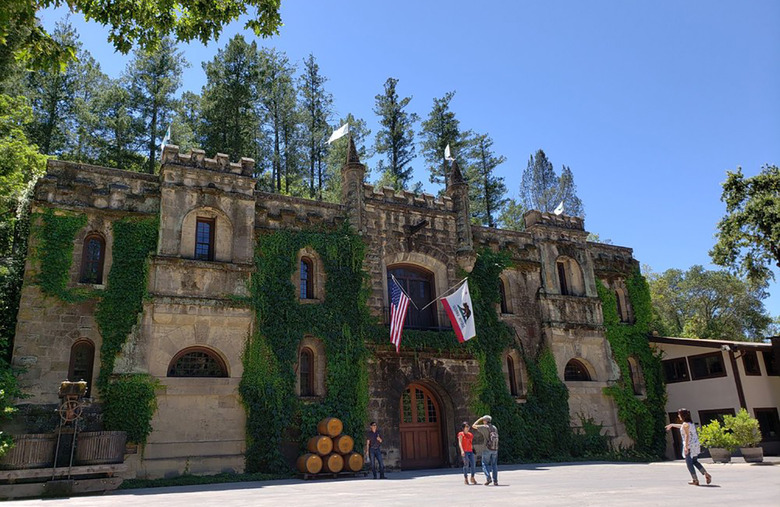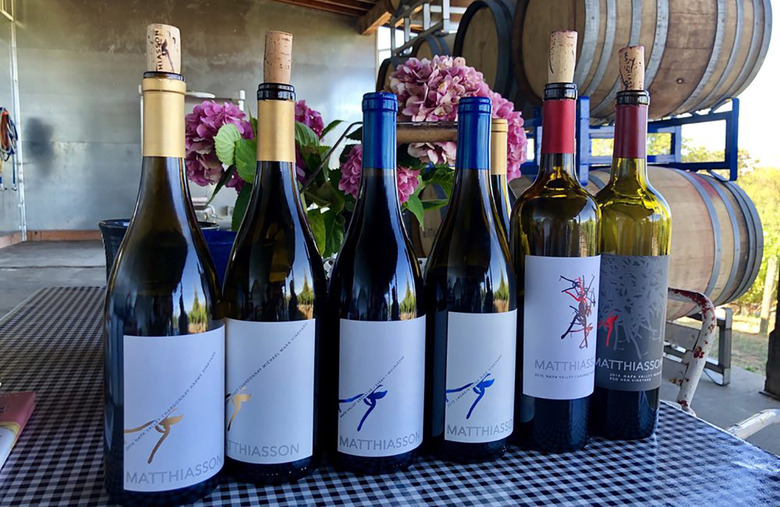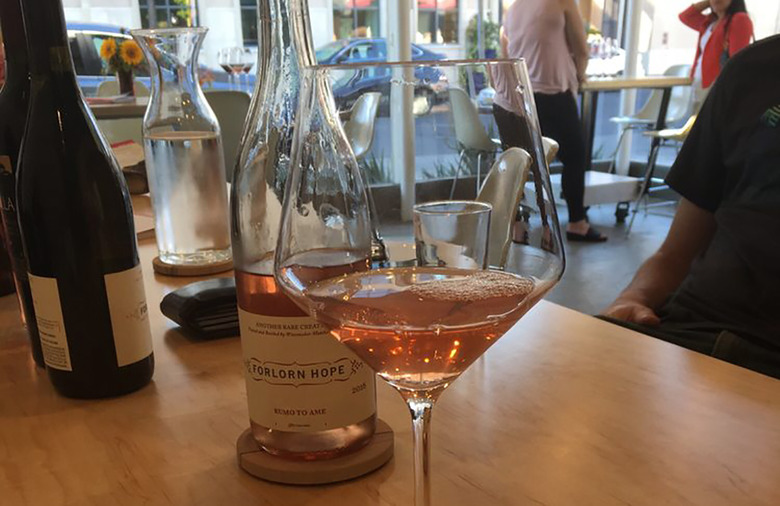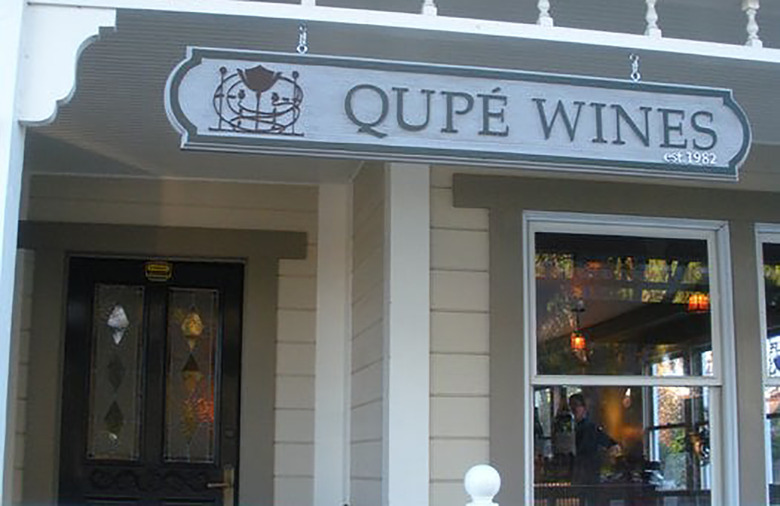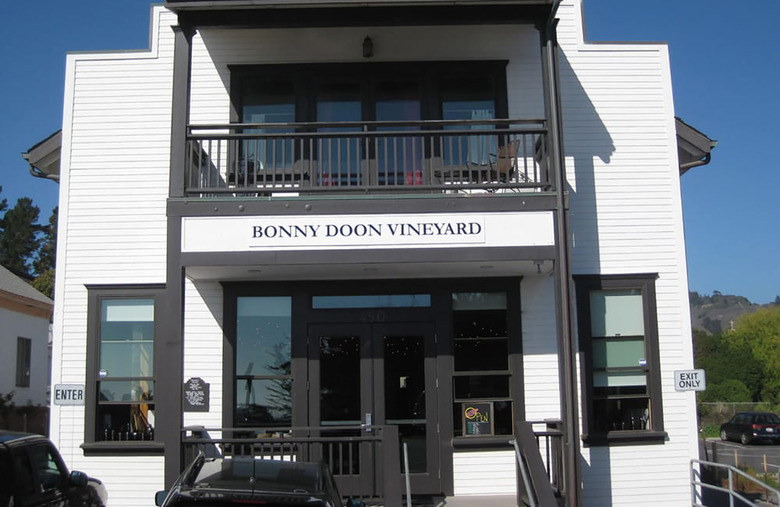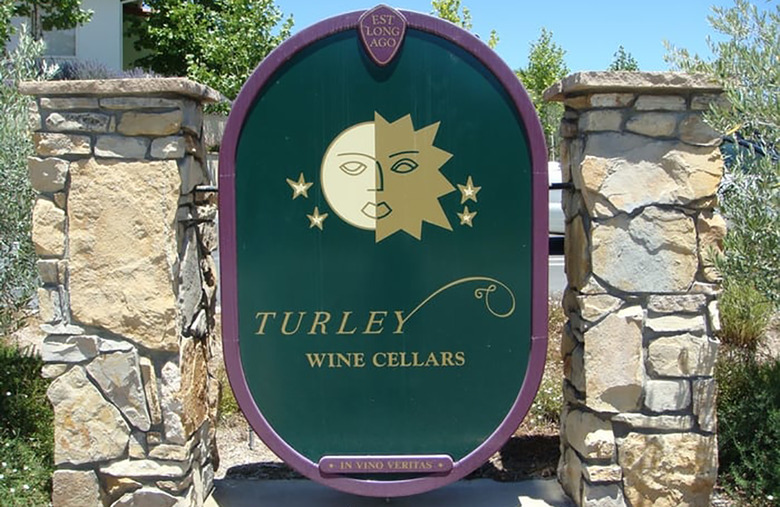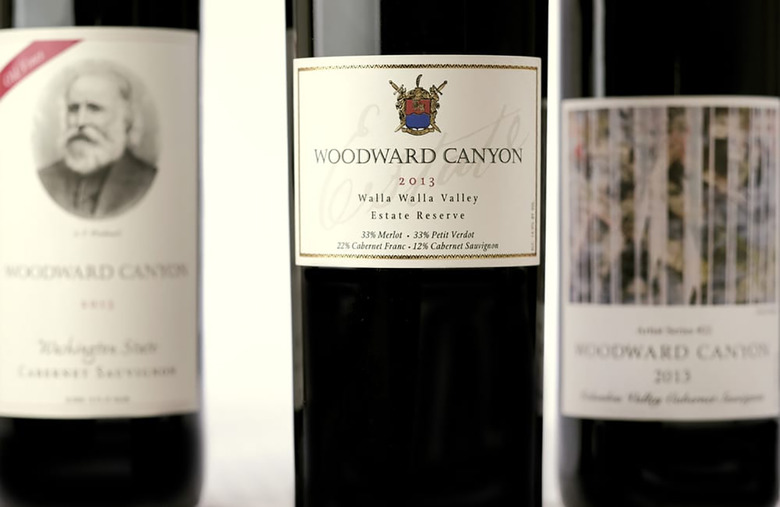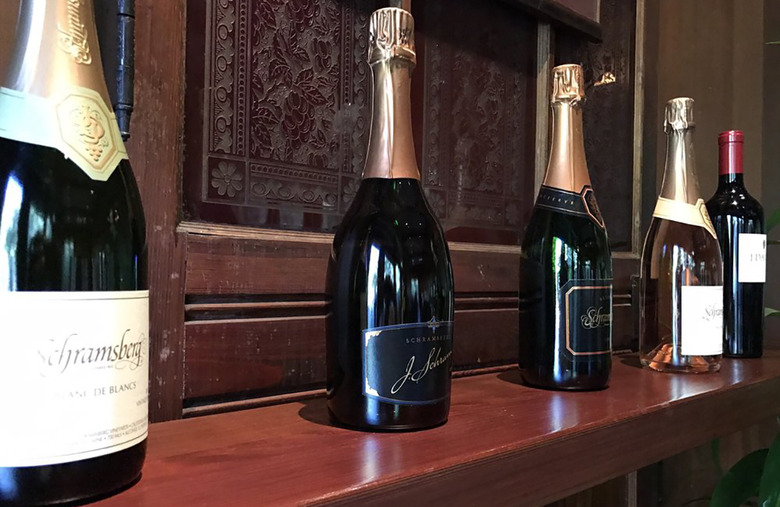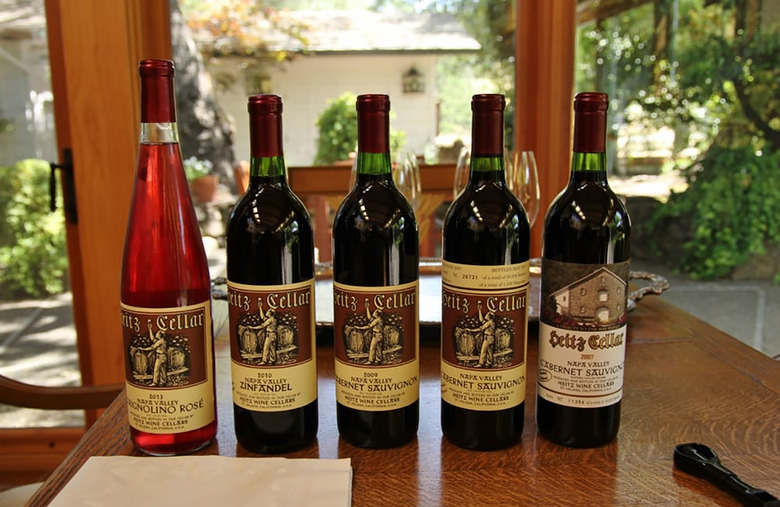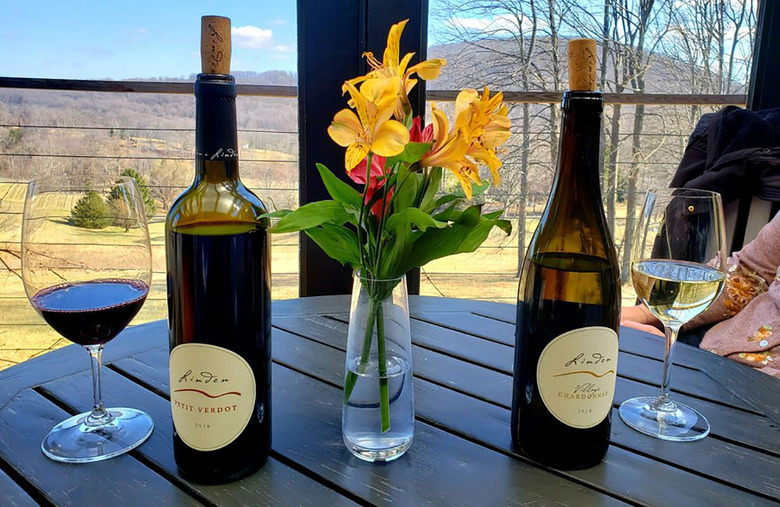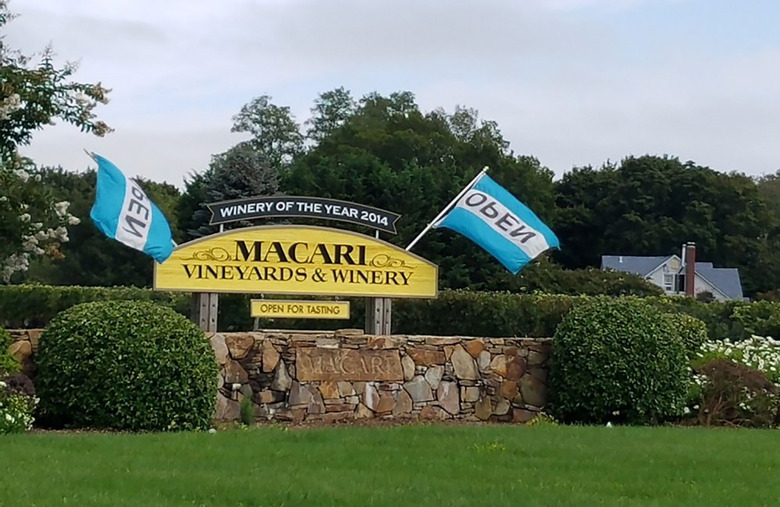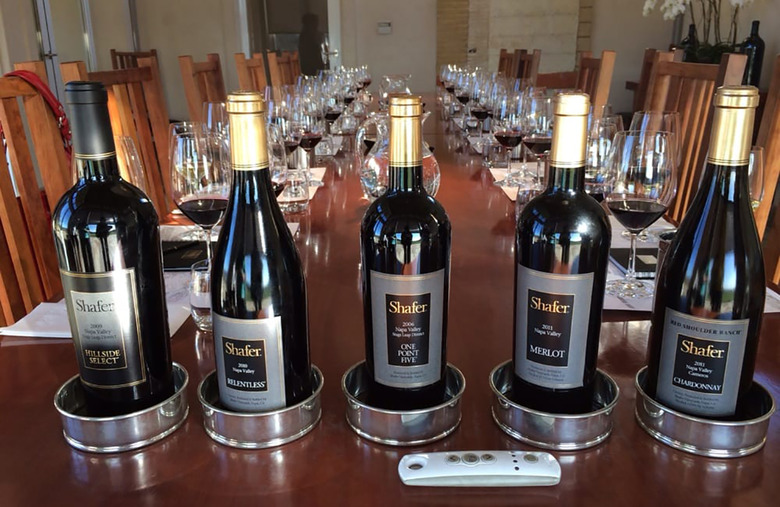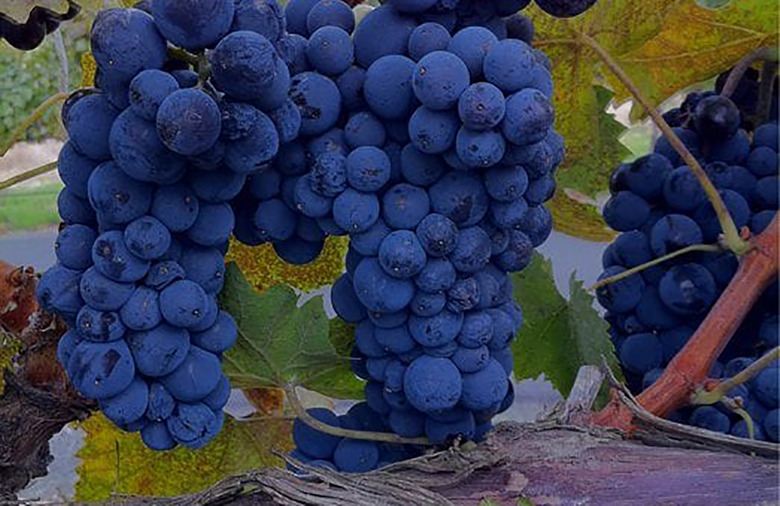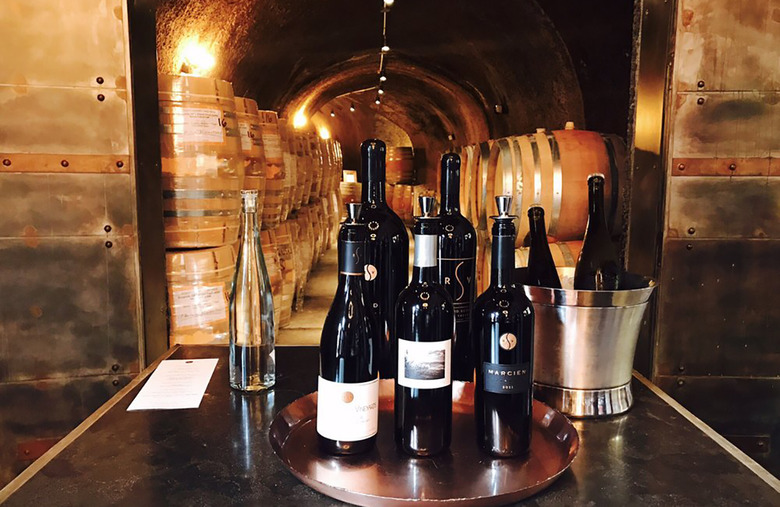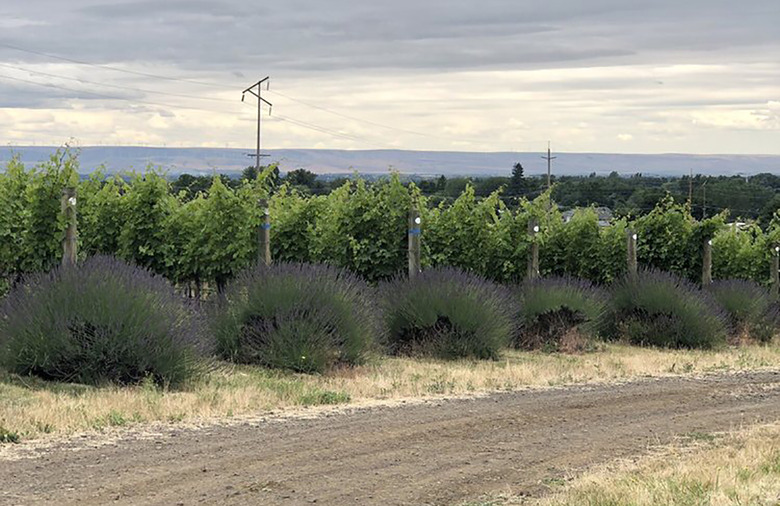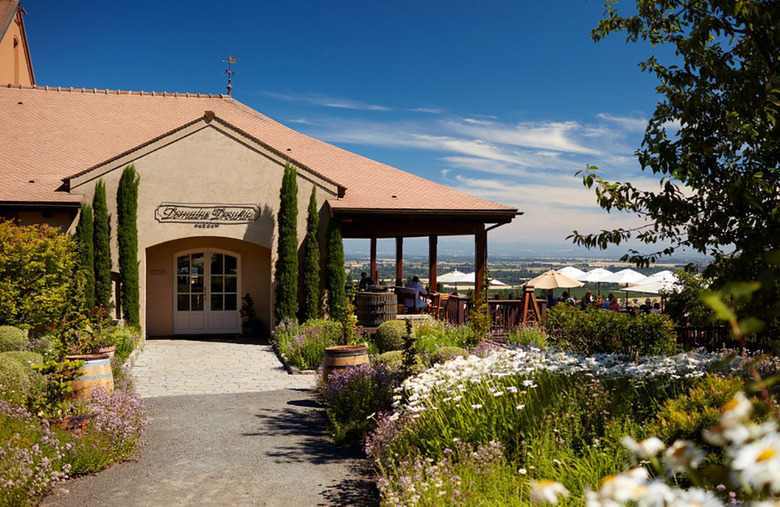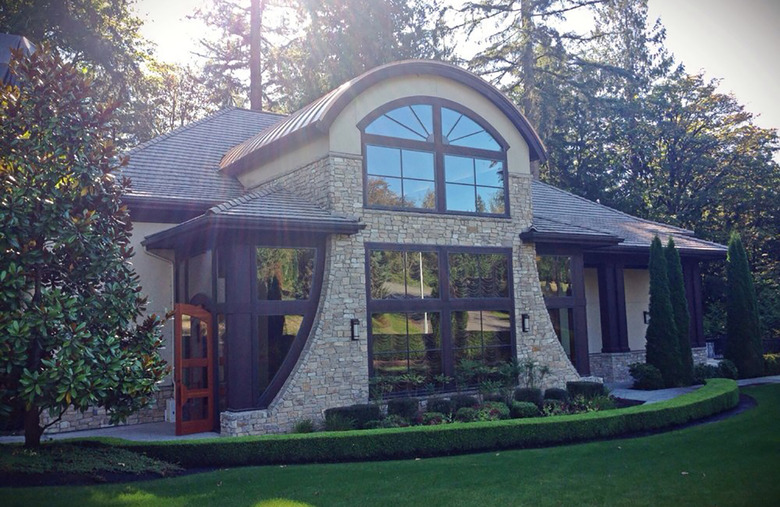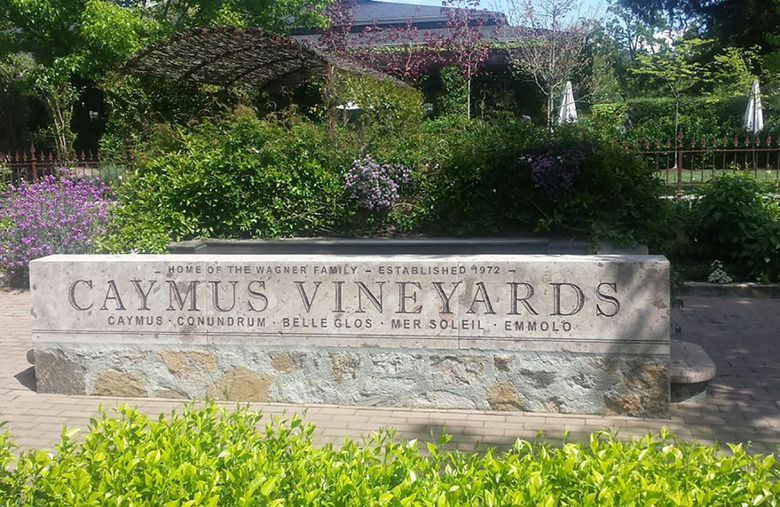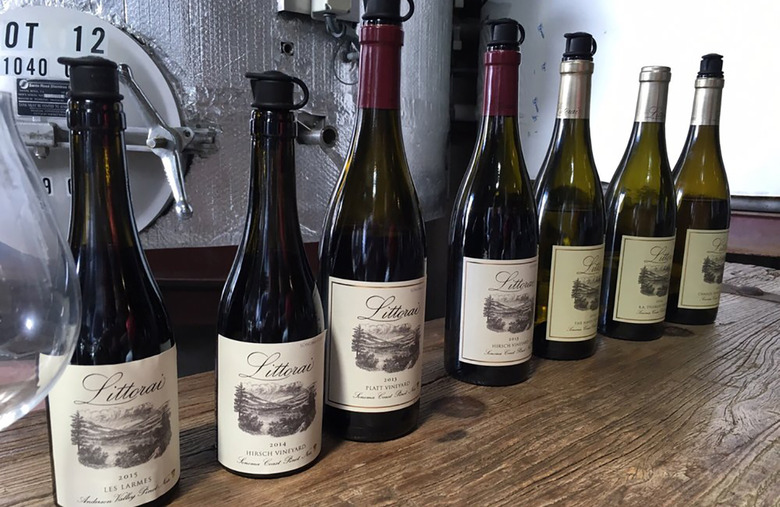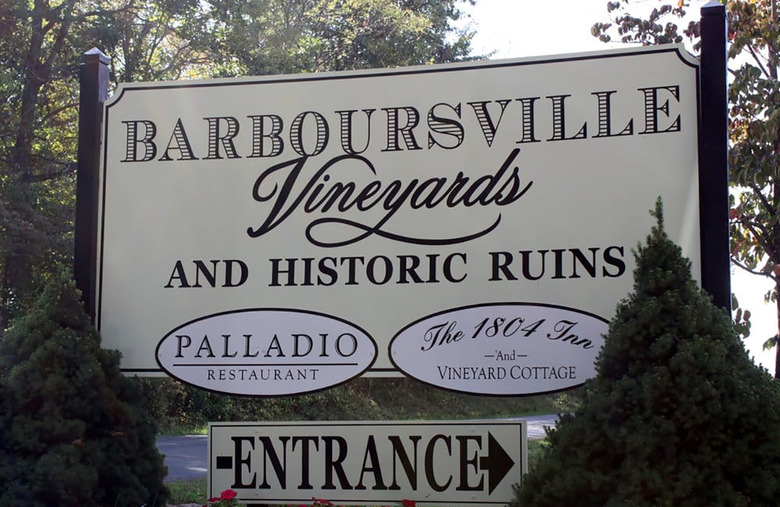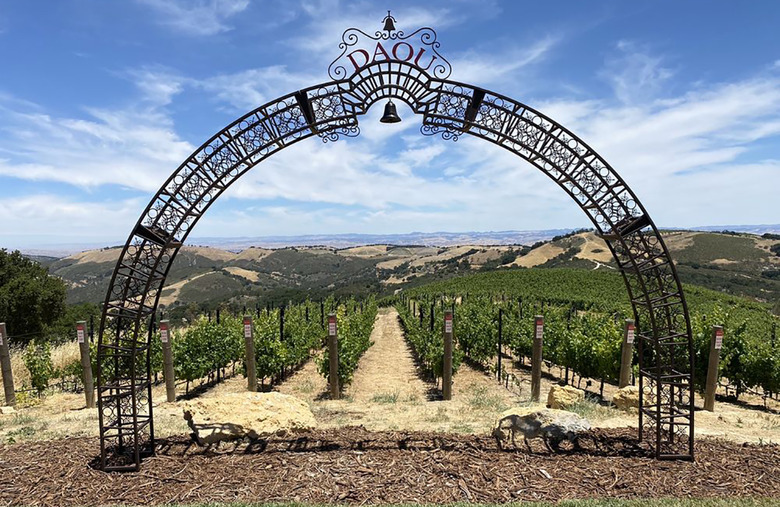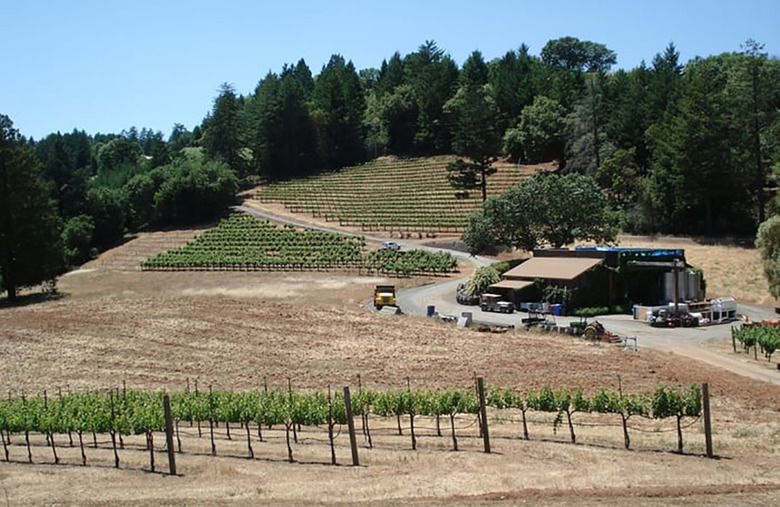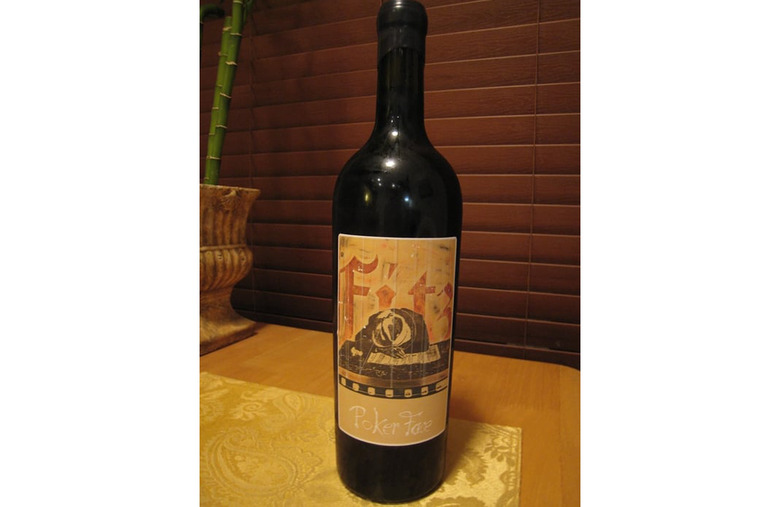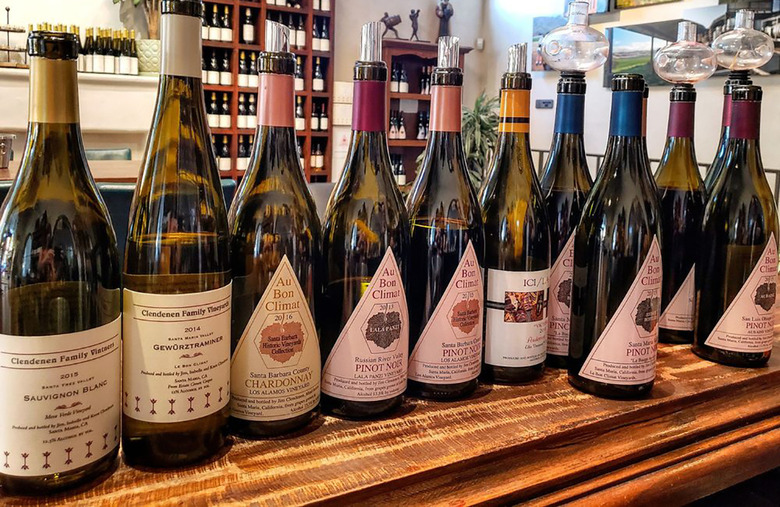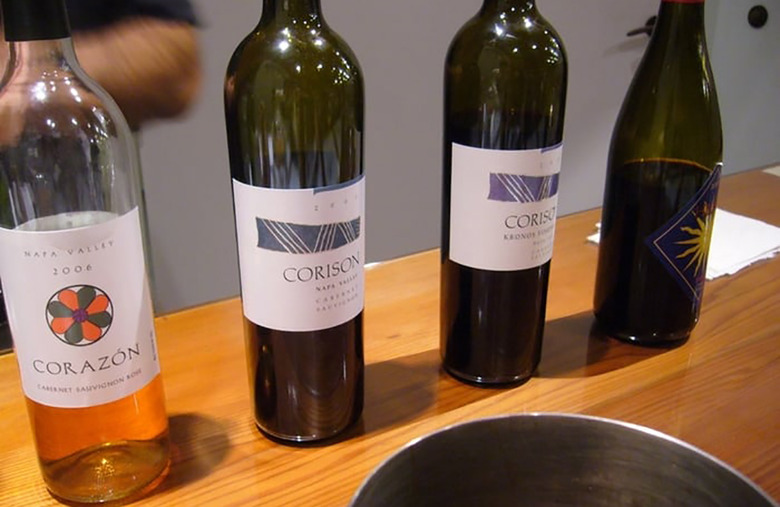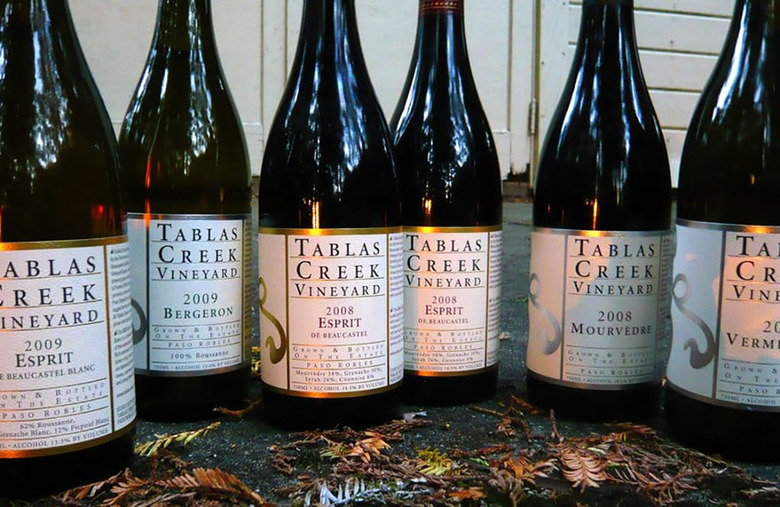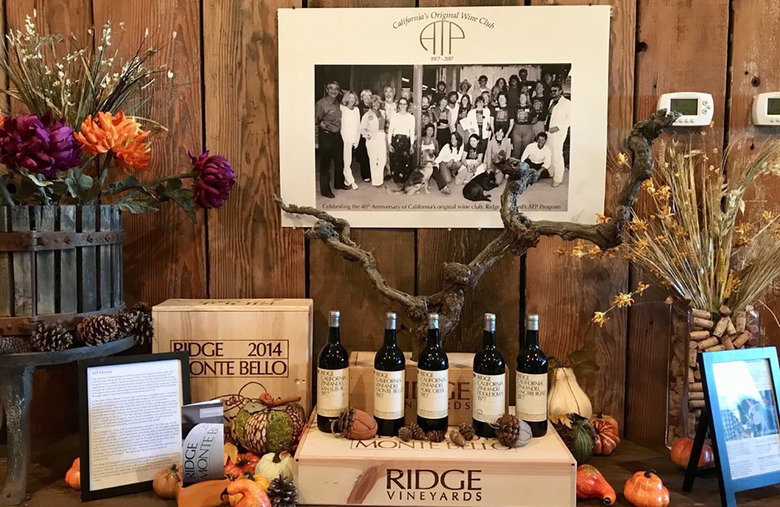101 Best Wineries In America 2017 Slideshow
These are all great wineries.
When Leif Erikson dubbed the North American coast "Vinland" or "Winland" back around 1000 A.D., he may or may not have meant to call our continent a land of vines (linguists say the term might also have meant "land of meadows") — but a land of vines is what we've become. The sheer quantity and variety of good and great wine being made in America has grown exponentially in recent decades. It is now produced in all 50 states — even Hawaii, even Alaska (though admittedly the latter state's offerings are mostly made from fruits and berries, plus grape juice imported from more temperate climes) — and there are bottles worth savoring from almost every source.
Narrowing our national enological wealth down to a mere 101 wineries, then, is a daunting task each year. To help us meet the challenge, we reach out annually to experts in the field, from all over the country — sommeliers, wine writers and bloggers (including our own contributors, of course), chefs and restaurateurs, and of course the wine-savvy editors at The Daily Meal — asking them to nominate their favorite wineries (as many as ten per person) and to tell us what they like about them.
This year we invited about 60 of these professional (or passionate amateur) wine-lovers to weigh in. Some of our respondents asked to remain anonymous, but we are happy to be able to acknowledge the assistance, in devising and ranking our list, of our frequent wine contributors Roger Morris, Andrew Chalk, Gabe Sasso, Anne Montgomery, and John Tilson (of The Underground Wineletter); chef/restaurateurs Cindy Pawlcyn, Robert Del Grande, and Norman van Aken (all three of them members of The Daily Meal Council) and New York/New Orleans restaurateur Sean Josephs; David Sawyer, wine director at Brooklyn's Lilia Ristorante; writers Stacy Slinkard, Tom McNamee, and S. Irene Virbila (former restaurant critic and wine columnist for the Los Angeles Times); grocer extraordinaire and highly respected wine expert Darrell Corti (also a member of The Daily Meal Council); Steve Wallace, retired proprietor of the legendary Wally's Wine & Spirits in West Los Angeles; and Renée B. Allen, director of the Wine Institute of New England. We've also included some remarks given to us for previous editions of this list by sommeliers Dan Davis of Commander's Palace in New Orleans and Eduardo Bolaños of the Terroni Group restaurants in Los Angeles; Daniel Johannes, corporate wine director for Daniel Boulud's Dinex Group; and wine writers Elizabeth Schneider and Keith Beavers.
Collating the nominations, we ended up with a list of more than 250 wineries, old and new, large and small, many of them nominated numerous times. We factored in our own tasting notes of recent vintages, consulted the leading wine publications and newsletters, and considered recent awards from prestigious competitions, and narrowed the choices down to 101.
Food with your wine? Here are our favorite winery restaurants around the world.
In the nomination process, we asked our panel to consider not just the obvious places — California, the Pacific Northwest, Virginia, and New York state — but the entire country. The majority of our choices, 61 of the wineries listed, did turn out to be Californian; as noted, plenty of other places are doing a good job with wine, but the Golden State is still by far the largest producing state and still boasts the largest number of great wineries. The Pacific Northwest (Idaho included) is well-represented too — but you'll also find wineries from New York (both the Finger Lakes and Long Island) and Virginia, and from Maryland, Texas, Colorado, Arizona, New Mexico, Michigan, Pennsylvania, and Connecticut.
Going to Napa? These wineries offer spectacular views.
Among our "bests" are old-line producers that helped pioneer the mid-twentieth-century California wine revolution (Robert Mondavi, No. 64, and Heitz Cellar, No. 20); newer small producers of great promise (Sandlands, No. 64; Uvaggio, No. 92); top Pacific Northwestern standard-setters (Quilceda Creek, No. 11; The Eyrie Vineyards, No. 61); the best of New York state and Virginia (Boundary Breaks, No. 42; Barboursville Vineyards, No. 8, respectively); and, certainly, some wineries you might not have heard of, from places that might not immediately come to mind as wine producers (New Mexico's Gruet, No. 86; Colorado's Two Rivers, No. 100).
What you might notice missing are some of the most famous California "trophy wines" — the ones that would cost you $500 to $1000 or more per bottle, if you could even locate one for sale. These are absent because, for whatever reasons (and we could guess at a few of them), our panelists simply didn't vote for them. That said, some wineries on our list do command top dollar, and some are difficult to find in ordinary retail channels and go primarily to longtime mailing list customers. On the other hand, there are plenty of easily accessible wines represented, too, many of them offering excellent wine at fair prices.
Those who compare this year's ranking with last year's 101 Best might notice that 24 of our 2016 "bests" are no longer represented. That doesn't necessarily indicate any decline in quality on their part; many of them received votes again this year, but the numbers just computed a little differently this time around, leaving room for some new entries. The same is true of producers whose position moved down on the list; this doesn't mean that their wines are not as good as they were last year, only that a slightly different panel cast their votes in a slightly different way.
We're proud of the following list, and grateful to the experts who helped us compile it. We're also excited to hear your feedback: Did your favorite American winery make the cut? Let us know which winery on our list is your favorite — or if we missed one that you love — by tweeting us @TheDailyMeal using the hashtag #101BestWineries.
101. Sunset Meadow Vineyards, Goshen, Conn.
Working with some 17 varieties of both vinifera (merlot, cabernet sauvignon, cabernet franc, lemberger) and hybrid (cayuga white, seyval blanc, chambourcin) grapes, Sunset Meadow owner George Motel is a champion of 100-percent Connecticut-grown wines. His repertoire includes dry, off-dry, sweet, and sparkling offerings. "Some personal favorites," Renee Allen, director of the Wine Institute of New England tells us, "include Cayuga White, a refreshing and crisp dry white, and Midnight Ice, one of only two ice wines produced in Connecticut."
100. Two Rivers, Grand Junction, Colo.
Colorado natives Bob and Billie Witham planted their vineyards from scratch in 1999, adding a showplace winery, a conference center, and a "wine country inn." They produce a semi-sweet riesling and a buttery chardonnay, but it's their reds that really shine. Wine writer and sommelier Stacy Slinkard hails the Two Rivers syrah and cabernet sauvignon, both based on estate-grown fruit, as "delicious ambassadors for Colorado's thriving wine scene."
99. Novelty Hill Winery, Woodinville, Wash.
"Consistently terrific mid-priced wines in a world where there are too few," notes wine connoisseur and Amazon.com board member Tom Ryder. The winemaker here is Mike Januik, of the adjacent (but independently owned) Januik winery. Novelty Hill's proprietors own the Columbia Valley's acclaimed Stillwater Creek Vineyard, and their cabernet sauvignon sourced there is consistently rated highly by critics — especially considering its modest $30 price tag. An excellent syrah and a Bordeaux-style blend called Cascadia also win plaudits.
98. Saintsbury, Napa, Calif.
"Elegant, pure pinot noir and chardonnay from the part of the Carneros district in Napa County," enthuses Tom McNamee, the author of Alice Waters and Chez Panisse and The Man Who Changed the Way We Eat: Craig Claiborne and the American Food Renaissance. "They deserve particular recognition because 'Napa' is not thought of as a place for Saintsbury's kind of wine...[but] [t]he terroir is nonetheless perfect: San Pablo Bay within sight, with its cool, foggy summer nights; bright September sun; superb soil (and management thereof); meticulous selection; Burgundian winemaking technique."
97. Brooks Winery, Amity, Ore.
This Willamette Valley gem, founded by the late Jimi Brooks and now run by his sister, Janie Brooks-Heuck, specializes in riesling and pinot noir, producing more than a dozen variations on the former (from the dry, smoky, flinty Vitae Springs to the juicy, medium-sweet Le Chenaie and the opulent Tethys, a winemaker-assisted ice wine) and a dozen distinctive examples of the latter, one of them a bright, tangy rosé. A complement of Alsatian-style whites completes the portfolio, most notably among them a dry, aromatic muscat under the Terue label.
96. Castelli Vineyards, Sebastopol, Calif.
Sonoma County has no shortage of pinot noir producers, and this small-scale Green Valley producer makes fine examples of the wine, light and fruity, at reasonable prices — especially considering that they spend three years in neutral French oak and another year or two in the bottle before release. Where Castelli really shines, though, is in its efforts with a grape not traditionally revered in California: Piedmont's great nebbiolo. Current offerings include four different versions — in quantities ranging from 30 to 75 cases each — that express the character of the grape through sensations alternately austere and lush, tart and gorgeously fruity.
95. Ste. Chapelle Winery, Caldwell, Idaho
Oregon and Washington, reasonably enough, get all the attention in Pacific Northwestern wine circles, but their neighbor to the east now boasts more than 50 wineries of its own — the largest being Ste. Chapelle, founded in 1975 when the very idea of Idaho wine sounded like a joke (and was used as one in several movies). Today, the winery — whose proprietors also own the nearby Sawtooth Winery — produces a wide range of agreeable everyday wines (riesling, sauvignon blanc, petit verdot, cabernet sauvignon, etc.) at bargain prices, but makes this list on the basis of its first-rate Panoramic series grenache, malbec, petit verdot, and syrah and its single-vineyard chardonnays, which are bright and full of varietal character.
94. Jefferson Vineyards, Charlottesville, Va.
Christened after a pioneering Virginia grape-grower named Thomas Jefferson and based around the site of Colle, the estate built by Jefferson's Tuscan-born associate Filippo Mazzei, this acclaimed third-generation family-owned winery dates from the mid-1980s. The great white Rhône variety viognier is considered Virginia's official wine grape, and Jefferson's version, says wine writer and sommelier Stacy Slinkard, is the best one in the state (judges at the 2014 San Francisco International Wine Competition liked it too, awarding the 2013 vintage a double gold medal). The winery's other strength is in its Bordeaux varietals — a spicy petit verdot is particularly impressive — and its Meritage blend.
93. Ravines Wine Cellars, Geneva, N.Y.
This attractive Seneca Lake property is noted for its rieslings — "New York Rieslings don't come any better...," wrote Eric Asimov in The New York Times a few years back (and the 2014 Finger Lakes Dry Riesling was one of Wine Spectator's top 100 wines last year) — but produces a full portfolio of good stuff. A citrusy, mineral-edged sauvignon blanc, a mouth-filling white made from a couple of hybrid grapes (cayuga and vignoles), a softly seductive cabernet franc, and a honeyed dessert wine made from sun-dried chardonnay clusters called Appassionata are among the standouts.
92. Uvaggio, Napa, Calif.
Specializing in Italian and Mediterranean French grape varieties, winemaker Jim Moore, a longtime veteran of the Robert Mondavi Winery (No. 64) produces a clean, green-apple-scented vermentino; a Friuli-inspired white called Zelo Bianco, which is mostly pinot grigio, with traminer and moscato giallo added; a nicely perfumed but dry and spicy moscato (as well as a sweet muscat-based wine); a juicy-strawberry cinsault rosé; an intensely fruity barbera; and a ripe, peppery primitivo — among other wines. Wine business old-timers will appreciate that Moore's partner in the enterprise is Mel Knox, the onetime wine retailer and educator who became the champion of fine French oak barrels for U.S. winemakers.
91. Marietta Cellars, Cloverdale, Calif.
Second-generation Marietta owner-winemaker Scot Bilbro claims to have learned how to use "magic" to make wine. Sure, the science is important, he admits, but it's what happens when everyone goes home and the wine in the tanks turns "dark and rich" that creates something special. In his case, that includes a series of old-vine wines (a rosé, a mostly-zinfandel red, and a riesling); some red "Family Series" blends (based on zinfandel, syrah, and cabernet sauvignon, respectively); and authoritative estate-grown reds — a 100-percent cabernet sauvignon, a zinfandel with touches of syrah and petite sirah, and a syrah-based field blend. The Daily Meal wine contributor John Tilson, of The Underground Wineletter, calls it "a real sleeper," offering "great wines at great prices for 40 years, and virtually unknown."
90. Callaghan Vineyards, Elgin, Ariz.
The Callaghan family produces a blend of (mostly) petit verdot, with merlot, cabernet franc, and cabernet sauvignon added, which tastes sort of like a Pauillac might taste ten years from now when global warming has ratcheted up the temperature over Bordeaux way a few notches. Other than that, they've pretty much given up on the Bordeaux grapes they'd been trying to grow for years in the hot climate southeast of Tucson, and have turned to Mediterranean varieties instead. With a concentration on Spanish cultivars like tempranillo, monastrell (mourvèdre), and garnacha (grenache), Callaghan produces wines with plenty of character and intensity of flavor (and plenty of alcohol) — convincing indications that this Southwestern state (in an area where grapevines were first planted, by Spanish missionaries, in the 1500s) has considerable wine-growing potential.
89. Lang & Reed, St. Helena, Calif.
California winemakers tend to be variously inspired by (and desirous of emulating) the wines of Burgundy, Bordeaux, and/or the Rhône Valley. John Skupny, a veteran of Caymus (No. 10) and Clos du Val, and his wife, Tracey, former sales director for Spottswoode Estate Vineyard and Winery (No. 36), looked elsewhere when they founded Lang & Reed (named for Tracey's parents, grapegrowers Reed and Jerzy Lang) in 1996: the Loire Valley, where superb red wines are made from cabernet franc, while many of the best whites are based on chenin blanc. The winery's Two-Fourteen cabernet franc (the number refers to the grape clone used) could stand up to many of the Loire's best Chinons and Bourgueils, with its deft balance and rounded cherry fruit. The superlative Mendocino chenin blanc suggests a Chinon blanc on a tropical vacation. Respected Napa Valley chef-restaurateur Cindy Pawlcyn names Lang & Reed as one of her favorites.
88. Antica Terra, Dundee, Ore.
Helping make wine at the esteemed Sine Qua Non (No. 5) and producing a small amount of her own syrah on the side, Maggie Harrison expected to settle down in Santa Barbara County, becoming part of that region's thriving wine scene. When she was offered a chance to work with the vines — mostly chardonnay and pinot noir — at a dramatically situated site in the Willamette Valley's Eola-Amity Hills, though, she couldn't resist. Her exotically named Antica Terra bottlings — for instance, the Aequorin chardonnay (named for a luminscent photoprotein) and Antikythera pinot noir (named for an ancient Greek "computer" used for tracking astronomical phenomena) — are elegant and superbly crafted, and the intimate seated tastings offered (for $20 or $60 per guest) are well worth trying; the more expensive option offers fine wines from around the world as well as those from Antica Terra.
87. Old Westminster Winery & Vineyard, Westminster, Md.
Jay and Virginia Baker harvested their first grapes only in 2012 — having planted vineyards a few years earlier in an attempt to save their family farm — but from the start they earned plaudits for their well-focused, well-made wines. About half the grapes that go into the 2,500 cases of various wines they produce annually come from their own vineyards, which are sustainably farmed, at an elevation of 800 feet, on channery loam (filled with flat, thin fragments of various stones) over greenstone schist — a soil they believe is responsible for the minerality and intense aromatics their wines display. (The remaining grapes are sourced from neighboring vineyards.) The winery has won acclaim for such wines as its flinty albariño, its forthright viognier and viognier blends (the 2016 Cool Ridge Vineyard Limestone, for instance, is a highly original combination of 30 percent viognier and 70 percent grüner veltliner), its earthy Home Vineyard cabernet franc, and several silky Meritage offerings.
86. Gruet Winery, Albuquerque, N.M.
The Gruet family had already been producing Champagne in Bethon, near Épernay, for 30 years when they first visited the American Southwest in the 1980s. To their surprise, they discovered chardonnay and pinot noir vines being cultivated successfully at high altitude about 150 miles south of Albuquerque. They planted their own vines and began making sparkling wines in the classic méthode traditionelle, relying on the low humidity to prevent rot, and the cool nights at 4,300 feet above sea level to slow ripening of the grapes for greatest complexity. The results have been wonderful. Today, Gruet produces a range of what Sacramento grocer and wine and food expert Darrell Corti, a Daily Meal Council member, calls "splendid sparklers," both vintage and non-vintage, including an ethereal rosé and a stunning bone-dry vintage sauvage, both very fairly priced at under $30 a bottle and both reminiscent of wines made back home in the Champagne region. The winery also produces small quantities of still wine — chardonnay, pinot noir, and cabernet sauvignon.
85. Va La Vineyards, Avondale, Pa.
Anthony Vietri is one of the more original winemakers in America. Over the past decade, he has cultivated more than two dozen French and Italian varietals and their clones in what he calls his "little vineyard" of slightly less than seven acres located amid the area's mushroom farms. They are unusual wines, to say the least, often benefitting from long aeration, and none of them taste quite like anything else you've tried. Who can imagine a blend of tocai, malvasia, viognier, pinot grigio, and petit manseng, or one of malvasia nero, barbera, sagrantino, carmine, lagrein, charbono, teroldego, and petit verdot? There is no reference point for these wines — but they are well-made, highly original, and mostly delicious.
84. Charles Smith Wines, Walla Walla, Wash.
When a super-fruity Washington state white wine with a wacky label and a silly name — Charles Smith's Kung Fu Girl Riesling — ends up in the top half of Wine Spectator's Top 100 wines for 2016, you know there's some pretty good winemaking going on. Last year, Smith, a self-taught winemaker who looks like the rock-and-roll manager he used to be, sold ownership of his five main offerings to the massive Constellation Brands wine (and possibly cannabis?) company — not just Kung Fu Girl but also Eve, a tropical-fruity chardonnay; Château Smith Cabernet Sauvignon; a juicy syrah called Boom Boom!; and a mostly merlot blend, sourced from seven different Columbia Valley vineyards, tagged The Velvet Devil. Smith, who opened a 32,000-square-foot winery and event space in downtown Seattle two years ago — and whose motto is "It's just wine, drink it" — continues to consult on these wines and also bottles wine under eight other labels, including the all-chardonnay Sixto and Casa Smith, specializing in Italian red grapes — barbera, sangiovese, and primitivo.
83. Shinn Estate Vineyard and Farmhouse, Mattituck, N.Y.
Owners Barbara Shinn (the vineyard manager) and David Page (the winemaker) are pioneers of biodynamic viticulture on Long Island's North Fork; their property is also solar- and wind-powered. As Keith Beavers, self-described "chief wine geek" for Vinepair.com, told us a couple of years back, "The wines they produce are a very true expression of what Long Island terroir has to offer." Renée B. Allen, director of the Wine Institute of New England, adds that "the owners are passionate about their wine and their environment, and give their time to help educate others about their philosophies." The wines they make — which include sauvignon blanc, chardonnay, pinot blanc, merlot, cabernet franc (the region's signature), and what Allen calls "an outstanding petit verdot" — are elegant and well-structured, and consistently some of Long Island's best.
82. Château Ste. Michelle, Woodinville, Wash.
Way back in 1954, when the idea of good wine from vinifera grapes in Washington state sounded like a joke, a couple of small operations making fruit wines, the Pomerelle Co. and the National Wine Co., merged to form American Wine Growers. AWG evolved into Château Ste. Michelle, and with the help of legendary Napa Valley winemaker André Tchelistcheff, began producing high-quality wines from cabernet sauvignon, riesling, and other noble grapes. Along with Associated Vintners (now the Columbia Winery), Ste. Michelle can truly be said to have pioneered fine wine in Washington, and it grew large enough and marketed its wares so widely that it almost single-handedly established the state's reputation for wine excellence. (Today, Washington is the third-largest wine-producing state in America, after California and New York.) Along the way, the winery has developed new vineyard areas, introduced new technology, maintained high standards of production, trained winemakers who have gone off on their own to great acclaim, and just in general been an industry leader in Washington and beyond. From their accessibly priced Columbia Valley and Indian Wells lines (the $15 Columbia Valley Syrah is one of America's great red wine bargains) to their top-of-the-line Artist Series Bordeaux-inspired blends, Château Ste. Michelle keeps doing it right.
81. Fall Creek Vineyards, Tow, Texas
This pioneering Texas Hill Country winery has made great strides since owners Ed and Susan Auler brought in Chilean Sergio Cuadra as director of winemaking in 2013. Fall Creek's range of wines encompasses roughly 20 bottlings, from a couple of $10 entries dubbed Ed's Just Right White and Ed's Smooth Red to a top-of-the-line merlot-cabernet sauvignon blend called Meritus and a series of premium Terroir Reflection offerings including one of the best Texas chardonnays (from a grape that can be challenging in Texas), an authoritative tempranillo, and a rich grenache–syrah–mourvèdre blend. The Daily Meal wine contributor Andrew Chalk also appreciated the winery's 2015 Vintner's Selection sauvignon blanc, which he called "a delicate compromise between grassy New Zealand examples and fruity northern California examples."
80. Dolin Malibu Estate Vineyards, Malibu, Calif.
Three years ago, the U.S. Alcohol and Tobacco Tax and Trade Bureau awarded AVA, or American Viticultural Area, status to the region called Malibu Coast, which extends up from the coastline high into the Santa Monica Mountains. Elliott Dolin was one of the leaders of the movement to recognize the area, which now boasts more than 50 mostly small-scale producers. Dolin, a onetime musician turned real estate investor, grows chardonnay behind his house on a Malibu hillside, but also sources fruit from elsewhere in the AVA — he recently released a merlot, cabernet franc, and cabernet sauvignon blend, using Malibu Coast grapes, called The Blue Note — and makes juicy, earthy pinot noirs from Central Coast grapes. Dolin's production is tiny, but he's a serious winemaker — Kirby Anderson of Santa Barbara County's Tommy Town winery consults — and a poster boy for the possibilities of this corner of California, where the first grapes were planted in the early 1800s.
79. Dragonette Cellars, Los Olivos, Calif.
Founded a dozen years ago by brothers John and Steve Dragonette and their friend Brandon Sparks-Gillis — all of them veterans of the famed Wally's Wine & Spirits in West Los Angeles — Dragonette culls grapes from some of the best Central Coast vineyards (Fiddlestix, Stolpman, and John Sebastiano, among others) and turns them into deftly fashioned wines brimming with bright varietal character. Sauvignon blanc, pinot noir, and syrah are the specialties, and they're beautifully made; the winery's flagship MJM — mostly syrah, lightly accented with grenache and viognier — is a particularly racy, earthy, spicy example of the region's suitability for Rhône-style reds.
78. Red Car Wine Company, Sebastopol, Calif.
From its "vineyards on the edge of the Pacific," Red Car makes textbook cool-climate chardonnays, pinot noirs, and syrahs — plus a honey-tinged roussanne — that have plenty of character but don't overpower the palate, and thus end up being particularly food-friendly. David Sawyer, wine director at Brooklyn's Lilia Ristorante, hails the winery for "making incredibly delicate, aromatic, and savory-driven wines in the 'true' West Sonoma Coast region."
77. Ceritas Wines, Healdsburg, Calif.
"Simplicity" is the watchword for husband-and-wife team John Raytek and Phoebe Bass — he's the winemaker, she tends the vineyards — at this small Sonoma County property. Chardonnay and pinot noir are the focus (though there are plans to release, late this year, a 2014 cabernet sauvignon from the Peter Martin Ray vineyard in the Santa Cruz Mountains). Chef-restaurateur Norman Van Aken, a member of The Daily Meal Council, is a particular fan of the winery, noting: "'Minimalist winemaking' is an oft-used term these days, but the concept is never truer than at Ceritas, where the goal is to grow the best possible fruit, always bearing the fingerprint of vineyard and vintage but never of the winemaker." He cites the Charles Heintz Vineyard Chardonnay and the Porter-Bass Vineyard Pinot Noir as standouts.
76. Broc Cellars, Berkeley, Calif.
As Keith Beavers, self-described "chief wine geek" for Vinepair.com, once put it, Broc's proprietor and winemaker, Chris Brockway, "is helping to define what is being called 'New California' wine. He plays around with all kinds of grapes, including the Languedoc native picpoul. He farms in the most natural way possible, coaxing wine out of low-energy facilities for the 'green' factor." Eduardo Bolaños, sommelier for the Terroni Group restaurants in Los Angeles, adds that "A lot of wineries like to focus on a couple of varietals and do them really well so as to maintain a great quality, but at Broc, they are working with close to a dozen different varietals and pulling off all of the different wines they make really really well." Among these wines are those made from such uncommon-in-California varieties as counoise, Valdiguié, lagrein (with which Brockway produces a dark, rich rosé) and nero d'avola, as well as a carbonic-maceration carignan and a splendid Rhône-style white blend called Love White (the grapes come from Love Ranch in Madera County) — among other offerings.
75. Black Ankle Vineyards, Mount Airy, Md.
This newish Maryland producer — proprietors Ed Boyce and Sarah O'Herron had their first harvest in 2006 and opened their winery for business two years later — makes serious red wines, including Bordeaux-style blend, with varying percentages of the usual grapes, called Rolling Hills, Viento, and Slate 3 and a barrel-fermented syrah called Passeggiata X. The winery is also now producing a 100-percent grüner veltliner called Terra Sol and a couple of viogniers, among other wines. Finding wines like these in Maryland is a delicious surprise.
74. Pheasant Ridge Winery, Lubbock, Texas
Robert Parker once opined that this West Texas winery, a pioneer of the state's modern-day wine industry, produced cabernet sauvignons that were "lush, intense wines with plenty of character that can compete in quality with anybody." Texas-based writer Andrew Chalk, a frequent contributor to The Daily Meal, tested this statement by organizing a tasting, involving several sommeliers and other wine experts, to try six vintages of Pheasant Ridge cabernet. His conclusion was that they were mostly very good, and "showed a formidable ability to age in the bottle." The winery also produces chenin blanc, unoaked chardonnay, and pinot noir, but it's the cabernets that cement its position here.
73. Kelly Fleming Wines, Calistoga, Calif.
Oregon native Kelly Fleming bought 300 acres in Calistoga in 1998, and gradually planted and tended 12 acres of grapevines near the legendary Eisele Vineyard. Sauvignon blanc and cabernet sauvignon are her primary concerns. The former, made partially with the highly aromatic musqué clone of the grape, is lusciously exotic. The latter is classic up-valley cabernet, with all the intensity of flavor (cherries, chocolate, anise, mint) and generous, slightly earthy bouquet the region's best examples of the wine can yield — all of it woven together with elegance and impeccable balance. A vivid cabernet rosé and a red blend (under the Big Pour label), mostly cabernet but in the current 2013 vintage including syrah, malbec, and a touch of petit verdot, round out the admirable portfolio.
72. Tatomer Wines, Santa Ynez, Calif.
Chef-restaurateur Norman Van Aken (a member of The Daily Meal Council) is a big fan of Graham Tatomer's stylish wines, having praised winemaking that "embodies the crux of Austrian wine: extraordinarily textured rieslings and intensely mouth-watering grüner veltliners." That's mostly what Tatomer makes — elegant whites, with gorgeous fruit, good acidity, and hints of citrus and mineral character (the Kick-on Ranch riesling is particularly rich in flavor), though he also does a good job with pinot noir, both red and rosé.
71. Chateau Grand Traverse, Traverse City, Mich.
The calling card at this beautifully situated estate, which combines one of the oldest and largest wineries in Michigan with a comfortable inn, is riesling — from crisp and dry to gloriously sweet. Founded in 1974 by Edward O'Keefe, the winery also produces a range of whites (the pinot grigio is notable), rosés (including a pinot noir vin gris), and reds, principally pinot noir and merlot. Chateau Grand Traverse was also the first Michigan winery to produce an ice wine, which was served at the 1989 inauguration of President George H.W. Bush. Oh, and let's not forget the line of cherry wines; Michigan produces three-quarters of America's tart cherries every year (and about a quarter of its sweet ones), and Grand Traverse knows what to do with them.
70. Bokisch Vineyards, Lodi, Calif.
Markus Bokisch spent his childhood summers in Spain and he and his wife, Liz, later worked for wineries in Catalonia's Penedès region — and they have transplanted their passion for Spanish wines to California's Central Valley. Their bottlings, all certified "green" by the Lodi Rules for Sustainable Winegrowing program, include vivid interpretations of albariño, verdejo, verdelho, garnacha blanca, garnacha, tempranillo, monastrell (mourvèdre), and graciano (a comparatively minor but important red Rioja variety) — the 2012 iteration of which won a double gold at the California State Fair Wine Competition. With a new enterprise, Tizona Wines, the Bokisches are beginning to work with malbec and old-vine zinfandel, and they promise "perhaps a sherry or even a cava at some point in the future."
69. Pedroncelli Winery, Geyserville, Calif.
Family-owned since 1927, this venerable Sonoma County property helped earn the Dry Creek Valley its reputation as some of the state's best zinfandel land. Pedroncelli's "Mother Clone" zin, a regular high-scorer and prize-winner, is a legendary wine that delivers pure zinfandel character for less than $20 a bottle. (They also produce a "Dry Rosé of Zinfandel" that is remarkable.) Based on traditional Portuguese grape varieties, their Four Grapes Port is as close as anyone in America is coming to reproducing traditional vintage port from Portugal. Sauvignon blanc, chardonnay, cabernet sauvignon, easy-drinking white and red blends... They do it all, for prices that are hard to beat, without pretension and with a friendly smile for anyone who stops in at the winery. "One vintage after another," notes Gabe Sasso, a regular wine contributor to The Daily Meal, "anything with the Pedroncelli name on it is as delicious and dependable as the day is long."
68. Favia Wines, Napa, Calif.
Winemaker Andy Erickson and viticulturist Annie Favia (a husband and wife team) have impeccable credentials: His résumé includes stints with Screaming Eagle and Harlan Estate; she spent 11 years working for the esteemed David Abreu, helping oversee vineyards for Harlan, Bryant Family, and more. It's not surprising, then, that when the two decided to start their own winery in 2003, it quickly became a cult favorite in its own right. Seeking out just the right vineyards, they jointly make about eight wines — white and red, varietals and blends — using grapes from the Napa Valley and from Amador County in the Sierra foothills. Particularly noteworthy are The Lincoln (an Amador County grenache and Rompecabezas (the name is Spanish for "brain-breaker" — i.e., puzzle), a blend of Amador grenache, mourvèdre, and syrah, aged in neutral French oak and 600-liter concrete eggs. Also worth trying are Favia's intensely fragrant, lemony Línea sauvignon blanc and their firm, spicy, mostly-cabernet-franc, Cerro Sur.
67. Keplinger Wines, Napa, Calif.
It was a job helping to open a winery in Spain's Priorat region that connected Helen Keplinger with the region's traditional garnacha tinta (red grenache) grape. While she was working there, her husband, D.J., visited often and the two toured vineyards throughout southern France. After returning to the U.S. and working at several Napa Valley wineries, Keplinger established her own enterprise, focusing on grenache (especially) and syrah, but also incorporating other Rhône and Provençal varieties like roussanne, viognier, grenache blanc, and mourvèdre, producing wines that display complex layers of flavor and richness. Their dozen-plus array of wines includes a powerful Basilisk grenache; a red called Sumō, which the winery describes as "a Côte Rôtie twist on petite sirah" (the petite sirah is co-fermented with viognier and blended with a bit of syrah); and a peppery, slightly floral grenache/mourvèdre/syrah blend called Lithic. The winery also produces an unusual dessert wine called The Holdout, an 80/20 blend of grenache and mourvèdre, fortified with grappa made from the Keplinger pomace and packaged in an antique-style bottle.
66. Staglin Family Vineyard, Rutherford, Calif.
Vines were first planted on what is now the Staglin property in the 1860s. A century later, legendary winemaker André Tchelistcheff supervised the cultivation there of cabernet sauvignon vines for use in Beaulieu Vineyards' renowned Georges de la Tour Private Reserve. Garen and Shari Staglin acquired the land in 1985, and honored its heritage as prime cabernet territory. Dan Davis, "wine guy" at Commanders Palace in New Orleans, once told us: "I met Shari Staglin when I was seated next to her at a luncheon at the home of Christian Moueix in Bordeaux. It took less than an hour for me to fall in love with her, and I've found her family's wines to have every bit of the elegance, charm, strength, and generosity that she showed me that day." Critics agree that Staglin's wines are, as Davis puts it, "among the very best examples of Rutherford chardonnay and cabernet sauvignon."
65. Patz & Hall, Sonoma, Calif.
For more than 25 years, Patz & Hall has focused squarely on just chardonnay and pinot noir. Their portfolio contains a few cuvée-style offerings, but the lion's share of what they do is single-vineyard wines. Most of their fruit comes from Napa or Sonoma, but one of their best-known pinots hails from the Pisoni Vineyard in the Santa Lucia Highlands. Their Hudson Vineyard chardonnay is regularly lauded as one of the best in its category. "Patz & Hall is distinctive among California wineries," offers chef-restaurateur Norman Van Aken (a member of The Daily Meal Council), "in no small part because they were highlighting the individual terroir of select vineyard sites before anyone thought that was cool. Their wines are layered, complex, utterly pure, and perfectly in balance."
64. Robert Mondavi Winery, St. Helena, Calif.
The late Robert Mondavi was one of the most important figures in the entire history of California winemaking — responsible more than anyone else for putting the Napa Valley on the map through the quality of his wines, his technological innovations, and his marketing savvy. When he sold his eponymous winery in 2004, four years before his death, to Constellation Brands — whose other properties range from New York's Manischewitz winery to Corona beer to Charles Smith Wines (No. 84) — for a reported $1 billion, some Mondavi fans feared that quality would plummet. Constellation, however, has remained true to the winery's legacy as a premium producer of a wide range of cabernet sauvignons, chardonnays, and other fine wines — including the landmark fumé blanc, a wine style invented for California by Mondavi himself.
63. Andis Wines, Plymouth, Calif.
Sacramento grocer and wine and food expert Darrell Corti, a member of The Daily Meal Council, hails this "newish winery in Amador County's Shenandoah Valley, with exciting freshness to its wines." The Andis vineyard was planted in 1978 and taken over in 2009 by real estate mogul Andrew Friedlander (whose commercial real estate company is the largest in Hawaii) and financial advisor Janis Akuna. Working with winemaker Mark McKenna, they built a state-of-the-art winery and began making what is probably the best sémillon in America, as well as excellent sauvignon blanc and a range of reds including a superbly concentrated estate zinfandel, charming estate-grown grenache, and a spicy, earthy primitivo.
62. Wind Gap Wines, Sebastopol, Calif.
Onetime sommelier and former Dean & DeLuca corporate wine buyer Pax Mahle's 6,000-case winery is named for the breaks in hill ranges that funnel the wind and influence the growing and ripening of the grapes. Wind Gap is dedicated to the exploration of cooler vineyard sites, which result in wines picked at lower sugar levels, with naturally lower alcohol. Grapes are bought from all over California and turned into such wines as an uncommon trousseau gris (a grape from eastern France, once bottled in California as gray riesling), an unusually vivid old-vines grenache, several chardonnays and pinot noirs, and a one-of-a-kind offering called Soif (French for "thirst"), which combines (in the current vintage) Valdiguié, zinfandel, carignan, petite sirah, dolcetto, negroamaro, and mourvèdre, fermenting the juice through carbonic maceration — which yields an uncommonly fresh, bright, fruity result.
61. The Eyrie Vineyards, McMinnville, Ore.
The late David Lett started making his Eyrie pinot noir in Oregon's Willamette Valley in 1970, back when Oregon was better known for olallieberries and Olympia Beer than for anything vinous. He went on to turn his grapes into some of the most elegant and delicate but full-flavored of American pinots, famously standing up to the celebrated Joseph Drouhin's Chambolle-Musigny in a taste-off in France (he lost by two-tenths of a point, inspiring Drouhin to later establish a winery in Oregon himself) and earning the sobriquet "Papa Pinot." He is also credited with having produced America's first pinot gris. Lett's son Jason now makes wine at Eyrie, and the results are as good as ever. (For something unusual, try the winery's melon de Bourgogne or muscat ottonel — or the excellent pinot meunier-based brut sparkler.) The English wine writer and Master of Wine John Atkinson recently tweeted, "If an alien asked me: 'What can Americans achieve?' I'd sit him down with a glass of Eyrie Pinot and a copy of As I Lay Dying." Well, all right, then.
60. Silverado Vineyards, Napa, Calif.
Founded in 1981 by Ron Miller, president and CEO of what is now the Walt Disney Company, and his wife, Diane Disney (Walt's daughter), the Napa Valley classic called Silverado Vineyards has consistently produced fine wines in a classic Calfiornia style. From the light but delicious Miller Ranch sauvignon blanc to the range of superlative cabernets to the sangiovese–cabernet blends called Fantasias, it's hard to find anything to fault. Gabe Sasso, who writes frequently on wine for The Daily Meal, hails not only Silverado's "reference-quality" cabernets but also their "excellent merlot" — adding that these are but two of the varieties they excel at. "Silverado is a quintessentially Napa producer at the high end of quality," says Sasso, "and their wines are more than fairly priced, too."
59. Vino Noceto, Plymouth, Calif.
Jim and Suzy Gullett bought their first Amador County vineyard in 1984, acquiring an additional plot next door three years later. After a year of sampling southern Rhône and northern Italian wines nightly with their meals — a "difficult" task, they assure us — they decided that what they liked most of all was Tuscany's definitive sangiovese. Sacramento grocer and wine and food expert Darrell Corti, a member of The Daily Meal Council, arranged for them to visit top Tuscan producers and later found them sangiovese cuttings. After making nine vintages at borrowed facilities, they built their own winery in 1999. Today they make a pinot grigio, a barbera, a zinfandel, and a port-style wine (from traditional Portuguese varieties) but their pride and joy are what Corti calls their "lovely, typical sangioveses" — currently a regular and a reserve bottling, plus a rosé. They have also recently released a take on moscato d'Asti, dubbed Frivolo — sold in both bottles and cans — and their basic sangiovese is available not just in glass but in a three-liter box, for the equivalent of $17 a bottle, a tasty bargain.
58. Arnot-Roberts, Healdsburg, Calif.
Arnot-Roberts, at the forefront of today's natural winemaking trend in California, is a collaboration between childhood friends Duncan Arnot Meyers and Nathan Lee Roberts. Both grew up in Northern California, explored different facets of the wine industry, and came together to found their joint namesake winery in 2001. Their wines, all fermented with natural yeasts and bottled unfined and unfiltered, include single-vineyard wines from common varieties like cabernet sauvignon, syrah, and chardonnay, but also wines from grapes not typically seen in the area, among them ribolla gialla, trousseau, and the Portuguese red wine varieties touriga nacional and tinta cão. These wines tend to be sommelier favorites.
57. Michael Shaps Wineworks, Charlottesville, Va.
Michael Shaps is a veteran of Virginia's well-regarded King Family Vineyards and Jefferson Vineyards (No. 94), and also a partner in Maison Shaps Winery in Meursault — prime Burgundian chardonnay country. Together with winemaker and general manager Jake Busching, another Virginia wine veteran, Shaps is becoming recognized as one of the Commonwealth's most exciting producers.
Wine writer Gabe Sasso, a regular contributor to The Daily Meal, calls Shaps an "impressive Virginia producer" and notes that "they are crafting reds which are structured and often age-worthy." These include a genuinely French-tasting Meritage, and more than credible cabernet franc, merlot, and petit verdot — as well as what may well be America's best version of tannat, the main red wine grape of France's Madiran region (and of Uruguay). "Among their whites," says Sasso, "the standout is a single-vineyard petit manseng." Also worth sampling is a white blend called Odette, combining petit manseng, chardonnay, riesling, muscat, and viognier into a busy but attractive quaffing wine. "If you have yet to realize that Virginia is growing some world-class wines," adds Sasso, "here's all the proof you need in one stop."
56. Navarro Vineyards and Winery, Philo, Calif.
"Ask folks in Sonoma what their favorite winery in the area is and many of them will tell you to head to Philo in Mendocino County and visit Navarro," wine educator and blogger Elizabeth Schneider of WineForNormalPeople.com once proposed. Navarro virtually owns gewürztraminer in California these days, making a dry, bright, intensely aromatic example that can stand up to its Alsatian inspirations quite nicely, as well as a lovely dry muscat, an easily drinkable edelzwicker (a blend of Alsatian varieties, this one primarily pinot gris and gewürztraminer), some of California's best zinfandel (it has won a gold medal and best in class designation from the Zinfandel Producers of America) and excellent chardonnays and pinot noirs. Prices are modest and, Schneider notes, "The best part: They regularly offer penny shipping to those of us who have to order rather than visit the winery!"
55. Inwood Estates Vineyards, Fredericksburg, Texas
Inwood's owner and winemaker, Dan Gatlin, was one of the first winemakers, along with West Texas vineyard owner Neal Newsom, who demonstrated over a decade ago that tempranillo was the grape with the most potential in the Texas High Plains. Last year, he produced a chardonnay (a grape that has historically not been a great success in Texas) that is a ringer for good Chablis — from grapes grown in Dallas County. Inwood's range also includes an unusual blend of chardonnay and the sherry grape palomino, and superb cabernet sauvignon and tempranillo–cabernet blends. "Note that Gatlin's reds are best after at least a decade of age," observes Texas-based wine writer and Daily Meal contributor Andrew Chalk, "and not showy while young." Chalk adds, "Even with the highest prices in the state, Gatlin always sells out and every top Texas restaurant has an Inwood wine on the list."
54. Sandlands, Napa, Calif.
Tegan Passalacqua and his wife, Olivia, dedicate this winery to "the forgotten classic California varieties" — by which they mean grapes like chenin blanc, mataró (an alternate name for mourvèdre), carignane (as they spell it), and trousseau noir (best known in France's Jura region, but long used in the production of California port). Sacramento grocer and wine and food expert Darrell Corti, a Daily Meal Council member, calls Sandlands wines "perhaps the best-made in California" — which sounds like a lot to live up to, until you realize that Tegan is the director of winemaking for the esteemed Turley Wine Cellars (No. 23)... and until you taste the wines. The trousseau noir is light, silky, and intensely fruity, a bit reminiscent of a top-level Fleurie; the smoky, mineral-tinged Contra Costa County carignane is old-school California-intense; and the Amador County chenin blanc has so much strength of character and sheer deliciousness of fruit that you'll wonder why this variety ever faded from popularity in the U.S.
53. Chehalem Winery, Newberg, Ore.
Sustainability is the watchword here. The winery is LIVE (Low Input Viticulture and Enology) certified and part of Oregon's Carbon Neutral Challenge Initiative; a lengthy sustainability statement on their website outlines many other "green" programs they are participating in. All very well and good, but how are the wines? Vintage after vintage, some of the very best from the Willamette Valley. Their Stoller Vineyards pinot noir (one of a number of their expressions of the grape) is wonderfully ripe, fresh, and chewy; their grüner veltliner is one of the very best American interpretations of that grape; their INOX (stainless steel) chardonnay is a pleasingly tart, lightly honeyed reminder of how good unoaked chardonnay can be — and there are four first-rate rieslings currently available, too.
52. Jaffurs Wine Cellars, Santa Barbara, Calif.
Craig Jaffurs sources grapes from some of Santa Barbara County's best vineyards and consistently releases hearty, well-balanced, Rhône-style vintages — for instance, a rich, citrusy Stolpman Vineyard roussanne, a vivid Thompson Vineyard grenache blanc, eight different syrahs, and a luscious late-harvest Vogelzang Vineyard viognier — as well as, just for contrast, a very nice Enticer Pinot Noir. This is a winery that seems to get better with every vintage.
51. Foxen Vineyard and Winery, Santa Maria, Calif.
Named for English sea captain William Benjamin Foxen and run by his great-great-grandson, Dick Doré, and co-owner and winemaker Bill Wathen, Foxen Vineyards is historic in every sense of the word. And the "Foxen Boys," as the two men are known, continue to make history, first as early adopters of sustainable agriculture and, recently, with the addition of solar power in the winery and tasting room. Foxen offers dependably good sauvignon blanc, chardonnay, and pinot noir and a range of single-vineyard syrahs, but also such delights as a serious old-vines chenin blanc, a delightful rosé of merlot and sangiovese, and an unusual dessert wine made from (historic) mission grapes.
50. Hanzell Vineyards, Sonoma, Calif.
This legendary property in the Mayacamas Mountains was founded in 1953 by James David Zellerbach — chairman of the board of the Crown Zellerbach paper company and later U.S. ambassador to Italy — who planted chardonnay and pinot noir grapes with the intention of making wines that would rival those of Burgundy, back when many of today's older-generation would-be-Burgundian California winemakers were still drinking out of sippy cups. Many early reviewers felt that he succeeded, thanks in large part to the efforts of winemaker Brad Webb. Today, Hanzell — under new ownership, and with Michael McNeill as winemaker and Lynda Hanson as his associate — still deserves a place of honor for its Ambassador's 1953 Vineyard Chardonnay and other richly textured, eloquently complex offerings — three chardonnays and three pinot noirs at this time. A newer offering is the winery's Sebella chardonnay, sourced from young vines, fermented in stainless steel, and aged in neutral French oak.
49. Beckmen Vineyards, Los Olivos, Calif.
One of Santa Barbara County's top specialists in Rhône-style wines, Beckmen isn't a flashy producer, but it offers an ample range of well-crafted, well-balanced wines, all estate-grown, consistent in quality and vivid with varietal character. Standouts include a lively, mineral-edged grenache blanc; an aromatic, dark and full-bodied Block Eight grenache; a PMV (for Purisima Mountain Vineyard) syrah that is a classic expression of what this grape can do in California; and a proprietary Rhône blend called Cuvée Le Bec that pretty much defines the genre. (Straying outside the Rhône genre, Beckmen also makes nice chardonnay and cabernet sauvignon.)
48. Dr. Konstantin Frank Vinifera Wine Cellars, Hammondsport, N.Y.
The late Dr. Frank championed vinifera grapes in the Finger Lakes back when everybody else was convinced that only native lambrusca varieties and maybe French-American hybrids could be grown there. Frank silenced his critics with his first release in 1962, a Johannisberg riesling made from late-harvest grapes affected with so-called "noble rot" in the style of the great German trockenbeerenauslese wines. He planted some 60 vinifera varieties in all, and today European wine grapes are taken for granted in the region. Frank's son, Willy, took over the winery after the founder's death, and today his son, Fred, and Fred's cousin, Eric Volz (the vineyard manager) are in charge. Whites remain, as they have always been, the winery's strong suit — Sacramento grocer and wine and food expert Darrell Corti, a Daily Meal Council member, describes them as "impeccable whites with history behind them" — and the gewürztraminer, pinot gris, and grüner veltliner, among other wines, are all dependably good, as is the aromatic, exotic rkatsiteli, made from a grape Frank grew familiar with when he made wine as a young man in Soviet Georgia. Among the winery's reds, lemberger and old-vine pinot noir seem to do best. Two associated wineries, the sparkling-only Château Frank and the lower-priced Salmon Run, have been added to the family.
47. Sandhi Wines, Santa Barbara, Calif.
This property, founded in 2010 by former sommelier turned winemaker Rajat Parr, winemaker Sashi Moorman, and boutique-winery mogul Charles Banks, makes chardonnays and pinot noirs exclusively, combining fruit from some of the oldest vines in the Santa Rita hills, including the storied Sanford and Benedict vineyard, with grapes from the area's newer plantings. The chardonnays are characterized by clean flavors and acidity and distinct fruit and mineral notes; the pinot noirs are deep and complex, with fresh dark fruit and a hint of mineral bite, emblematic of the area's soil and foggy cool weather. However small and relatively new, this is one of the region's most important wineries — and one that has only just begun to make its mark.
46. Neyers Vineyards, St. Helena, Calif.
As national sales director for the celebrated Northern California wine importer Kermit Lynch, Bruce Neyers is constantly exposed to some of the best wines of (among other places) Bordeaux, Burgundy, and the Rhône, and he and his young winemaker, Tadeo Borchardt — hailed by the San Francisco Chronicle as a "winemaker to watch" — make finely crafted wines in the traditional French style that play in the same league. Sourcing grapes from Napa (including the Neyers property), Sonoma, and the Central Coast, the winery produces, among other things, award-winning cabernets, serious chardonnays with moderated oak (the 304 bottling is oak-free), a couple of elegant pinot noirs, an unusually complex grenache, and a bold carignan.
45. Andrew Murray Vineyards, Los Olivos, Calif.
Andrew Murray has earned his reputation as one of the most adept of the so-called Rhône Rangers with his affordable but exquisite single-vineyard syrahs, mourvèdres, grenaches, and cinsaults, and his excellent viognier, his roussanne-and-grenache-blanc Enchanté, and his mostly cinsault Espérance rosé. "At a time when many California wines seem to be priced proportionally to their producers' egos," Robert Parker wrote in Murray's early days, "Murray's offerings are a breath of fresh air given their exceptionally high quality and realistic prices." Murray's awkwardly monikered "This Is E11even" wines (the name is a convoluted reference to This Is Spinal Tap) stray into non-Rhône varietals, including sauvignon blanc, cabernet sauvignon, and pinot noir, but also offer a lot of wine for the money.
44. DeLille Cellars, Woodinville, Wash.
This gem of a winery, which produces its wines mainly from selected vineyards in the Yakima Valley, and more specifically the Red Mountain and Snipes Mountain AVAs, is famous for its well-balanced, terroir-driven style, frequently described as European in character. "You won't find better cabernet sauvignon-based blends in Washington state," says wine educator and blogger Elizabeth Schneider of WineForNormalPeople.com. "Restrained, earthy, but fruity, with moderate tannin and acid, these wines will make you think you're drinking Bordeaux, not a New World wine." There's also a dandy Bordeaux-style white called Chaleur Blanc, made from sauvignon blanc and sémillon. She adds that the Rhône-style wines bottled under the Doyenne label are also outstanding. "The syrah and roussanne have all the herby, soft, complex notes you'd want, with ample fruit — they're Rhône wines, Washington style!"
43. Ken Wright Cellars, Carlton, Ore.
UC Davis enology and viticulture graduate Ken Wright made wine at Ventana Vineyards and Talbott Vineyards in Monterey County before moving north to the Willamette Valley and founding his own winery in 1994. He makes nice pinot blanc and chardonnay and a memorable syrah from Walla Walla, Washington — but his heart and his skill is in his single-vineyard pinot noirs, always some of Oregon's best. Chef-restaurateur Norman Van Aken (a member of The Daily Meal Council) is a great champion of Wright's wines. "He believes strongly," says Van Aken, "that great things happen in wine where there exists a commitment by the vineyard owner to the vineyard's individual voice and to a place's overall soul."
42. Boundary Breaks Vineyard, Lodi, N.Y.
If you don't like riesling, this winery has nothing to show you. Their motto is "Riesling, no other" — and all they produce is single-vineyard, single-clone examples of that wine (with one exception, their Ovid Line North, which uses four different clones), dry to late-harvest sweet. Chef-restaurateur Norman Van Aken (a member of The Daily Meal Council) likes them because they're "hyper-focused and completely groundbreaking," and have "turned their dedication to their vineyard and love for the riesling grape into a project that not only is a revelation for the Finger Lakes region, but one that is helping redefine the potential of all emerging American AVAs."
41. Tensley Wines, Los Olivos, Calif.
Joey Tensley first gained attention as the precocious winemaker at Beckmen Vineyards (No. 49), but started making his own wine in 1998 and has blossomed into one of the Central Coast's vinicological stars. His own small production currently includes a Rhône-style "Essential White" blend, and he has made excellent grenache, both red and rosé, and viognier, among other wines, but it's clear that Tensley's favored medium is the syrah grape. He currently produces seven different ones, sourced from a number of top local vineyards, as well as a couple of syrah-based red blends, and they are unfailingly first-rate.
40. Mount Eden Vineyards, Saratoga, Calif.
John Tilson of The Underground Wineletter describes Mount Eden as "a pioneer California winery that produces consistently great chardonnay, pinot noir, and cabernet sauvignon all from the same area. This is a remarkable achievement, and the wines are made in a very traditional way and improve with age over decades." Mount Eden sits perched on a mountaintop overlooking Silicon Valley, at an altitude of 2,000 feet. First planted with pinot noir and chardonnay three-quarters of a century ago, before anyone had heard of microchips, the winery now makes concentrated, balanced wines from these same old vines — as well as the cabernet Tilson mentions, an outstanding example that takes advantage of naturally low yields due to the soil's high proportion of Franciscan shale.
39. Red Newt Cellars, Hector, N.Y.
Riesling reigns supreme in the Finger Lakes, and Red Newt Cellars is producing benchmark examples of the wine. David and Debra Whiting founded Red Newt in 1998, establishing both a bistro that Debra quickly turned into the top restaurant in the area and a winery where David could craft vineyard-specific rieslings, along with gewürztraminer, pinot gris, merlot, and cabernet franc — and a port-style wine called Hellbender, made with cabernet franc, merlot, syrah, cabernet sauvignon, and a drop of pinot noir. Now under the oversight of winemaker Kelby Russell, the rieslings of Red Newt show incredible balance and acidity.
38. Duckhorn Vineyards, St. Helena, Calif.
In a region dominated by cabernet sauvignon, Duckhorn Vineyards bucked the trend and made a special commitment to merlot, inspired by co-founder Dan Duckhorn's love of the grape. With his then-wife, Margaret Duckhorn, he established the winery in 1976, and now produces single-vineyard, single-varietal wines from Bordeaux varietals, especially merlot, but also cabernet sauvignon and sauvignon blanc. The wines are crafted with excellence and express the specific terroirs of each vineyard site. Since its tightly focused early years, Duckhorn has taken flight, now producing wine under five other labels with anatine-related names: Paraduxx ("bold and expressive Napa Valley blends"), Goldeneye (Anderson Valley wines, including a brut rosé sparkler), Migration (chardonnays and pinot noirs from around California), Decoy (a range of "ready-upon-release" varietals from both estate vineyards and other sources), and Canvasback (cabernet sauvignon from Washington state). (Since this story was first published, on Aug. 2, Duckhorn has also acquired Calera Wine, No. 12.)
37. Justin Vineyards and Winery, Paso Robles, Calif.
Founded by Justin Baldwin in 1981, with vineyards planted in rich limestone soil and the first commercial vintage released in 1986, Justin is famous most of all for its Isoceles — a blend of cabernet sauvignon, cabernet franc, and merlot (first made in 1987) in what is designed to be a Médoc style, a wine that has become arguably the region's definitive Bordeaux blend (and one, incidentally, that is priced considerably below most Napa Valley wines with similar intentions). Cabernet in a number of expressions remains the focus for Justin, but winemakers Fred Holloway and Scott Shirley also produce a cabernet/syrah blend with a dash of grenache called Savant, a full-bodied (and pricey) syrah labeled Focus, and an unexpectedly lithe 100 percent petit verdot, among other reds, plus very nice sauvignon blanc and chardonnay — all of which add up to make Justin one of the premier properties in this wine-rich locale.
36. Spottswoode Estate Vineyard & Winery, St. Helena, Calif.
Mary Novak and her daughters, Beth Novak Milliken and Lindy Novak, have been growing grapes on their historic Spottswoode estate since 1972, and turning them into some of the best, most elegant, most highly praised sauvignon blancs and Bordeaux-style cabernet sauvignons imaginable. Head winemaker and vineyard manager Aron Weinkauf oversees the estate's 24 separate vineyard blocks and dependably produces critically acclaimed, beautifully balanced wines. The cabernets, especially, are so good that the world's most influential wine critic, Robert Parker, was once moved to say that "if Château Margaux were in Napa Valley, it would be Spottswoode."
35. Dunn Vineyards, Angwin, Calif.
Randy and Lori Dunn founded their winery in 1978, before the now-respected Howell Mountain AVA was established. Dunn Vineyards is now a family affair, with the Dunns' son Mike and daughter Kristina also contributing to the production of their two wines: their flagship Howell Mountain cabernet sauvignon and a popular Napa Valley labeling that is about 85 percent Howell Mountain fruit (both are packaged in bottles with a distinctive red wax seal). Dunn cabernets express restrained alcohol, powerful tannins, and excellent acidity, making them extremely long-lived and hard to get — but worth the search.
34. Massican Winery, Calistoga, Calif.
Massican borrows its name from Monte Massico, a coastal mountain in Campania, in southern Italy, where Bacchus himself reportedly once hung out — but the inspiration for its wines comes from the north, from wineries in the Friuli region. Not much more than half a dozen years into his winemaking journey, Brooklyn-born winemaker Dan Petroski has already received a ton of praise for his wines, all of them white: a sauvignon blanc and a chardonnay of great quality, a racy blend of Italy's greco and pinot grigio, and a wine called Annia, which combines tocai friulano, ribolla gialla, and chardonnay to memorable effect. David Sawyer, wine director at Brooklyn's Lilia Ristorante, is a particular fan, noting "Petroski consistently wows me with his talent for making impeccable wines."
33. Acorn Winery, Healdsburg, Calif.
"Year after year after year, this is my favorite Sonoma producer," says wine educator and blogger Elizabeth Schneider of WineForNormalPeople.com. She notes that Bill Nachbur (who owns the property with his wife, Betsy) "has a handle on how to use oak to augment, rather than take over, his field blends.... And the consistency of quality across the line is impressive. A true gem." The winery's cabernet franc expresses a refinement not always found from that grape; the sangiovese is convincingly Italian in character. Those field blends, however, are truly unique. The Acorn Hill is almost a 50–50 blend of syrah and sangiovese but has dribbles of viognier and the Tuscan red varieties manolo and canaiolo. The Medley goes wild, combining syrah, zinfandel, cinsault, sangiovese, muscat, viognier, dolcetto, alicante bouschet, and a 5 percent dose of "other varieties." As wine writer Gabe Sasso notes, "Year after year, this Russian River Valley producer stuns the senses with their array of estate-grown, sustainably farmed wines. They are one of the great family-owned and operated boutique producers in existence."
32. Stony Hill Vineyard, St. Helena, Calif.
Stony Hill Vineyards founders Eleanor and Fred McCrae made a commitment to chardonnay back in the late 1940s, at a time when there were only about 200 acres of it planted around California. They were determined to make a fruity, non-malolactic, Burgundian-style wine, with just a hint of oak, and they succeeded, creating lovely, Chablis-style chardonnays that can actually spend time in a bottle without losing quality. They also became known for a very nice white riesling, back in the days when small California producers still bothered with that grape. Today, Stony Hill remains a family concern, run by the McCreas' son and daughter-in-law, Peter and Willinda McCrea, and their daughter Sarah. In recent years, the winery has developed a reputation for rich but well-balanced cabernets, but the chardonnay remains the star. As "wine guy" Dan Davis of Commanders Palace in New Orleans told us last year, it's "possibly the most food-friendly wine in California, a dead ringer for Grand Cru Chablis, and it will age delicately for decades."
31. Saxum Vineyards, Paso Robles, Calif.
Young Justin Smith launched this first-rate winery in 2002 on a family-owned hillside vineyard in which the terraces had to be carved out of rock that had once been ocean bed (fossilized whale bones uncovered in the process). Smith's wines were an immediate critical success. Today he produces 4,000 to 5,000 cases of red Rhône varietals annually — mourvèdre, grenache, and syrah — both single varietals and blends. Try his dense and delicious 2013 James Berry Vineyard Bone Rock Syrah (the name is a reference to those whale remains), 80 percent syrah with the balance filled out by mourvèdre, grenache, and roussanne — if you're fortunate enough to find a bottle.
30. Chanin Wine Co., Los Alamos, Calif.
Gavin Chanin, who learned the winemaker's art working with Jim Clendenen of Au Bon Climat (No. 4) and Bob Lindquist of Qupé (No. 25), also logging time at wineries in New Zealand and South Africa, makes what John Tilson of The Underground Wineletter calls simply "wonderful pinot noir and chardonnay." These aren't high-alcohol, heavily oaked wines. They have what David Sawyer, wine director at Brooklyn's Lilia Ristorante, describes as "extraordinary elegance and finesse, sourced from such regal vineyards as Bien Nacido and Los Alamos." Chanin wines, he adds, are much sought-after not just around the country but in Europe, too — "and that right there is pretty much all you need to know."
29. Andrew Will Winery, Vashon, Wash.
Just 4,500 sought-after cases of wine emerge from this small winery located on Vashon Island, the largest island in Puget Sound. Award-winning winemaker Andrew Will impresses critics and connoisseurs with his gorgeous Bordeaux-style blends and single varietals, the fruit for which hails from carefully selected vineyards in the Columbia Valley. His 2012 Sorella, 67 percent cabernet sauvignon, 20 percent merlot, and 13 percent cabernet franc, reflects his art as a winemaker: It is a rich and elegant wine, with hints of smoke and spice; his Ciel de Cheval from the same vintage, half merlot and the rest cabernet sauvignon and cabernet franc, is attractively plummy, with a mineral edge. Both are superlative. A hard right turn towards the Rhône gives us Will's anomalous viognier, from the Lake Chelan region, full of its own brand of spice.
28. Château Montelena Winery, Calistoga, Calif.
Château Montelena's 1973 chardonnay bested four famous white Burgundies and five of its fellow Californians to win top honors in the legendary 1976 "Judgment of Paris," pitting California chardonnays and cabernets against their counterparts from Burgundy and Bordeaux. The event had an electrifying effect on the international wine trade and earned the Golden State's wines their first real respect in France and beyond. As wine educator and blogger Elizabeth Schneider of WineForNormalPeople.com has so eloquently put it, "That's Montelena's unbelievably positive and wonderful legacy — making California a legit wine region — and they continue the tradition today. Based in Calistoga at the northern end of Napa in a giant castle, the winery is owned by the Barrett family, who could be snobby and exclusive, but instead they are true wine lovers who chase quality, balance, and a lighter touch in their wines above all else." The winery's current offerings span a Napa Valley gamut, from not just chardonnay but sauvignon blanc and riesling to cabernet sauvignon, cabernet franc, zinfandel, and petite sirah.
27. Matthiasson Winery, Napa, Calif.
Steve and Jill Klein Matthiasson have years of experience in the sustainable agriculture field, and Steve is a vineyard consultant for some of the best-known wineries in California, so they definitely know their way around grapes. In addition to their chardonnay, cabernet sauvignon, and pinot noir, they make a scrappy red from the northeastern Italian variety called scioppettino — and they've even made vermouth from a UC Davis-bred cross (sémillon and gewürztraminer) called flora. Their Rhône-inspired rosé is an irresistible warm-weather sipper. As Daniel Johannes, corporate wine director of the Dinex Group, told us awhile back, these wines "are pure and elegant while retaining California expression. Matthiasson represents the new frontier of California winemaking with his intense yet restrained, balanced style."
26. Forlorn Hope, Napa, Calif.
Winemaker-proprietor Matthew Rorick, who has made wine in New Zealand, South Africa, Chile, and around California, farms his own vines but also likes to work with "a handful of growers across the north of the state whose plantings might otherwise be misfits; the uncommon sites and varieties that pay tribute to California's eclectic and often unexpected viticultural heritage." Thus his Nodosaur, a field blend of picpoul, verdelho, albariño, and muscat; his Suspiro del Moro, made from the Portuguese red variety alvarelhão; and his perfumey trousseau noir. David Sawyer, wine director at Brooklyn's Lilia Ristorante, hails some of Rorick's earlier efforts. "His 2012 Sihaya skin-fermented ribolla gialla was Prinčič-esque [a reference to top Friuli producer Dario Prinčič] and insanely delicious — pickled apricot, chamomile tea, parmesan, oxidized almond, musky earth — and with wines like his Kumo To Ame Rosé of Mondeuse [the most recent vintage of the wine is based on pinot noir] and Heritage Vineyard Trousseau Noir, Rorick continues to give the world wines of rare character."
25. Qupé Winery, Los Olivos, Calif.
Qupé's Bob Lindquist was one of the first big names in Santa Barbara County winemaking, along with his longtime friend Jim Clendenen of Au Bon Climat (No. 2). While Clendenen concentrated on chardonnay and pinot noir, Lindquist, working in what he calls his "modern Stone Age winery," mastered marsanne, roussanne, viognier, mourvèdre, grenache, and above all, syrah. Qupé's standard Central Coast syrah has remained one of California's best Rhône-style wine bargains at $20 a bottle; in fact, most of his treasure trove of first-class Rhône-grape reds are priced under $40. Investor Charles Banks, whose other properties include Mayacamas and Sandhi, bought a majority interest in Qupé a few years back, but Lindquist remains in place, with his wife, Louisa, and Bob's older sons, Ethan and Luke, involved in the winemaking, too.
24. Bonny Doon Vineyard, Santa Cruz, Calif.
For the Rhône-ish at heart, the annual release of a new batch of wines from Randall Grahm — the original "Rhône Ranger," who first set up shop in 1983 — is cause for celebration, and for reaching for a bunch of glasses and a sturdy corkscrew. Well, actually, forget that last part, because Bonny Doon Vineyards, Grahm's groundbreaking, idiosyncratic Central Coast winery, has long since gone exclusively to screwcaps, and thank goodness for that. Grahm makes wines with consummate skill, often naming them with puns and obscure references. Many of these have become California classics, including the Châteauneuf-du-Pape-inspired Le Cigare Volant; the charming evocation of grenache called Clos de Gilroy; and a whole passel of serious syrahs. And you've got to love a guy who bottles an blend of mostly merlot plus some cabernet sauvignon, cabernet franc, and petit verdot labeled "I'm Not Drinking Any £#ƒ€!¢ Merlot!" ("You may well be looking at me sideways for saying it," cracks Grahm on his website.) Next up for Grahm: 10,000 (!) new grape varieties he says he plans to breed as part of his Popelouchum vineyard project, aimed at discovering a true New World grand cru. Hey, if anyone can do it, it's this guy.
23. Turley Wine Cellars, St. Helena and Templeton, Calif.
Larry Turley's blue-chip winery, with winemaker Tegan Passalacqua, whose other projects include Sandlands (No. 54), produces a veritable panoply of zinfandels — two dozen or so different ones — from its facilities in the Napa Valley and on the Central Coast, and they're simply some of the best, most purely Californian red wines in the Golden State. Oh, and there's a "white zinfandel" that's much more Côtes de Provence than Sutter Home; a sexy white called White Coat, composed of roussanne, grenache blanc, and a soupçon of vermentino (the name is a reference to the fact that before getting into the wine business as a founding partner of Frog's Leap Winery, Turley was an emergency room physician); a few rich cabernet sauvignons and petite sirahs; a light, lean cinsault; and a few other good things.
22. Woodward Canyon Winery, Lowden, Wash.
Named 2014 Washington Winery of the Year by Wine Press Northwest, Woodward Canyon, founded in 1981, is a sustainably run property (no herbicides or pesticides in the vineyards and gardens, recycled corks, green energy in the winery) that produces some of its state's best cabernet sauvignons — and there's lots of strong competition — and a range of chardonnays and merlots that can match character with anything produced in America. Owners Rick Small and Darcey Fugman-Small and winemaker Kevin Mott also have a way with Rhône varietals; their Walla Walla Valley Erratic Reserve, involving syrah, mourvèdre, and grenache, proves that intensity of flavor and refinement of texture are not mutually exclusive.
21. Schramsberg Vineyards, Calistoga, Calif.
When wine-lovers talk of California sparkling wine — and despite the other fine producers in the state, including several launched by the great French Champagne houses — it is Schramsberg they talk of first and foremost. There has been a winery on the spot since Jacob Schram founded one in 1862, but it was the purchase of the property in 1965 by Jack and Jamie Davies that made it a vital player in the modern California wine game. The wines are impeccable — lively, fresh, and complex — and have won countless awards and other honors (Richard Nixon and Zhou Enlai toasted peace between their nations with a '69 Schramsberg Blanc de Blanc in Beijing in 1972). In recent years, the winery has added cabernet sauvignons and pinot noirs under the J. Davies Estate and Davies Vineyards labels, proving that their expertise extends beyond sparklers. The Davies' son, Hugh, born the year his parents purchased the property, now runs the winery, keeping up the standard.
20. Heitz Cellar, St. Helena, Calif.
The late Joe Heitz was a pioneer of modern-day fine winemaking in the Napa Valley. He was a no-nonsense kind of guy, who had little patience with self-styled wine experts and liked to affectionately tweak what he saw as the pretensions of his fellow winemakers. He also made some of the best wine California has ever seen. Heitz and his wife, Alice, bought their first plot of Napa Valley vineyard land in 1961 and three years later acquired a 160-acre vineyard in St. Helena, and made a handshake deal to source additional cabernet grapes from a plot in nearby Oakville that became known as Martha's Vineyard — wine from which remains as one of the signal achievements of American winemaking. Besides his landmark cabernets, Heitz made fine wines from sauvignon blanc, chardonnay, and zinfandel, and championed a little-known Italian grape with strawberry-scented fruit called grignolino, from which he made both a delightful light-bodied red and a tasty rosé. Today, the Heitzes' children, winemaker David Heitz and winery president Kathleen Heitz Myers, honor their father's legacy and continue to produce wines of which every American wine-lover should be proud.
19. Linden Vineyards, Linden, Va.
Jim Law's 4,000-case winery, whose first vintage was 1987, has been producing consistently elegant and well-made wines from Bordeaux varieties and a few other grapes in a challenging wine region from the start. On the site of an abandoned hardscrabble farm in the Blue Ridge mountains (one of Law's wines is a Bordeaux blend called Hardscrabble), proprietor Jim Law grows cabernet sauvignon, cabernet franc, merlot, and petit verdot, but also sauvignon blanc, chardonnay, and the French-American hybrid vidal blanc (both as a late harvest dessert wine and in a dry blend with riesling). Wine educator and blogger Elizabeth Schneider of WineForNormalPeople.com calls Law possibly "the most talented and fascinating man in American winemaking."
18. Macari Vineyards, Mattituck, NY
Macari's Lifeforce Sauvignon Blanc, fermented in concrete eggs, says wine writer Gabe Sasso, "is a stunning example of what can be accomplished on Long Island with the correct grapes, planted appropriately and tended well." That's just the beginning of what comes out of this extraordinary biodynamically farmed North Fork property. The Macari family also produces some of Long Island's best chardonnay, a couple of merlot-heavy Bordeaux blends called Dos Aguas and Alexandra, and an unusual locally grown syrah — and the winery's explosively fruity cabernet franc reserve is the quintessential expression of Long Island's signature grape.
17. Shafer Vineyards, Napa, Calif.
The first Shafer Vineyards cabernet sauvignon, vintage 1978, trounced first-growth Bordeaux like Château Margaux and Château Latour in a blind tasting in Germany in 1993, and the vineyard has produced award-winning wines ever since. Businessman turned vintner John Shafer brought his winemaker son, Doug, into the family business, and further enhanced the property's reputation by hiring gifted winemaker Elias Fernandez, whose relentless pursuit of perfection gave name to the winery's Relentless, a gorgeous blend of syrah and petite sirah that wine writer and sommelier Stacy Slinkard describes as "one of my epiphany wines." Shafer cabernets are distinguished by their velvety, supple tannins; the chardonnays are buttery, rich, and unmistakably Californian.
Slinkard describes them as "Classic Napa through and through, from the brave, bold lines of prestigious Stag's Leap District Cabernet Sauvignon to the ongoing elegance and extroverted nature of their classic Carneros Red Shoulder Ranch Chardonnay." She adds, "These are wines you remember, full of character and remarkable presence."
16. Cayuse Vineyards, Walla Walla, Wash.
Christophe Baron, whose famly owns the Champagne house of Baron Albert, planted a vineyard in a rocky field in Washington's Walla Walla Valley. He dubbed the property Cayuse, after a local Indian tribe — whose name was itself, fittingly, derived from the French word cailloux, meaning "stones." The exquisitely crafted, richly textured wines Baron now produces are mostly red, focusing on syrah. His 2013 Walla Walla Valley Cailloux Vineyard Syrah placed 37th on Wine Spectator's list of the world's top 100 wines last year. Other wines include a racy grenache called God Only Knows, a cabernet/syrah blend (heavy on the former) labeled The Lovers, and a Bordeaux-style blend under the moniker Flying Pig. It is taking nothing away from Washington's many fine American-born winemakers to say that Baron brings a sense of French enological refinement to the proceeding.
15. Robert Sinskey Vineyards, Napa, Calif.
A remarkable vineyard which combines award-winning wines with a stunning venue, Robert Sinskey Vineyards (or RSV, as it fashions itself) is not to be missed. Fully 100 percent of its grapes are certified organic, and winemaker Jeff Virnig prides himself on using soil-building and farming techniques, which protect the 200 acres of vines located in the Stags Leap and Carneros areas of Napa Valley. Robert Sinskey produces California's best pinot blanc and an extraordinary vin gris of pinot noir in addition to his cabernet sauvignon, pinot noir, and various proprietary blends (among other wines); one of these is a pinot gris-based "enlightened wine" called Orgia, which Sinskey says provides "the initial impression of a white and the gravitas of a red."
14. Leonetti Cellar, Walla Walla, Wash.
Thirty years ago or so, when the Pacific Northwest premium wine industry was in its infancy, "experts" from California used to take it as an article of faith that Oregon and Washington could maybe do all right with white wines and delicate pinot noirs, but could never produce red wines with any real richness or intensity. We like to think that the first time any of these doubters got a mouthful of something from Leonetti, they felt pretty silly. The winery was launched in 1977, as Walla Walla's first commercial producer. Today, Chris Figgins, son of founders Gary and Nancy Figgins, unfailingly turns out some of America's most demonstrative, complex, purely delicious cabernet sauvignons and merlots (usually with small percentages of complementary grapes added), a largely cabernet Bordeaux-style reserve blend, and a sangiovese that would taste at home in Tuscany.
13. Domaine Drouhin Oregon, Dayton, Ore.
After a blind tasting of pinot noirs at the Paris Wine Olympics in the late 1970s, when an Eyrie Vineyards (No. 61) pinot noir from Oregon placed second behind one of its famed Burgundies, Maison Joseph Drouhin decided that it was time to take a serious look at that state's Willamette Valley. Look they did, and buy property, too, and in 1989, Domaine Drouhin Oregon opened. From the start (and they had a long head start, of course), the winery has been producing pinot noir (including a delightful pinot noir rosé) and chardonnay under the watchful eye of fourth-generation winemaker Véronique Drouhin-Boss and her vineyardist brother, Philippe. Today the wines are known for their balance, refinement, and ability to retain freshness with age.
12. Calera Wine, Hollister, Calif.
Think you know California pinot noir? Think again. The only winery located in the Mount Harlan AVA on California's Central Coast, Calera was one of the first modern-day wineries to plant pinot noir in the state, back in 1975, after winemaker Josh Jensen found a high-elevation, cool-climate location with soil rich in limestone. His pinots show Burgundian influences, balancing richness and elegance. Robert Parker, the most influential of wine critics, called Calera one of the most "compelling" pinot noir specialists "of not only the New World, but of Planet Earth." With Chalone veteran Mike Waller as winemaker, Calera has also produced chardonnay, viognier, and aligoté at their 100 percent gravity-flow winery, and these are hardly to be ignored. John Tilson of The Underground Wineletter salutes the winery's "consistently superb wines over its entire history and strong advocacy of traditional winemaking." The wines, he adds, "show great character and age beautifully." (Since this story was first published, on Aug. 2, Calera has been acquired by Duckhorn Vineyards, No. 38. Jensen and Waller will still be involved with the winery, and Jensen will join Duckhorn's board of directors.)
11. Quilceda Creek Vintners, Snohomish, Wash.
Launched in 1978, this is a winery with an impressive lineage: Co-founder Alex Golitzin is the nephew of the late André Tchelistcheff, whose skills and devotion as longtime winemaker at Beaulieu Vineyards shaped the foundations of modern-day Californian wine. Wine is still a family passion: Golitzin's son Paul took over the chief winemaker position in 1993. Golitzin's forte, like Tchelistcheff's, is cabernet sauvignon, and Quilceda Creek focuses exclusively on pure cabernet and cabernet blends. The specialization has paid off: The wines regularly earn rare 100-point scores from Robert Parker's Wine Advocate — most recently for the 2014 Columbia Valley and Galitzine Vineyard Red Mountain cabernets. These are simply some of the finest cabernets not just in Washington but in America as a whole.
10. Caymus Vineyards, Rutherford, Calif.
Founded in the Napa Valley in 1971 by the Wagner family, Caymus is justly famous, above all, for its Napa Valley and flagship Special Selection cabernet sauvignons (the latter produced only in the best years). Chuck Wagner, son of winery founder Charlie Wagner, oversees winemaking for both, the latter of which twice earned recognition from Wine Spectator as "Top Wine of the Year." Caymus zinfandel is also a wine to be reckoned with, and the Wagners separately produce various wines under the Mer Soleil, Conundrum, Emmolo, and Red Schooner labels (the last of these featuring a malbec made in the Napa Valley from grapes shipped chilled from Argentina). "Picture-perfect vintage-in and vintage-out," notes chef-restaurateur Norman Van Aken (a member of The Daily Meal Council), "the Wagner family's wines have elevated the scope of what was even possible for American wineries, and forever changed and shaped the market's love and appreciation for fine wine." Wine writer Anne Montgomery, a Daily Meal contributor, simply describes Caymus as "unstoppable."
9. Littorai Wines, Sebastopol, Calif.
Heidi and Ted Lemon founded their winery in 1993, with the idea of producing refined chardonnays and pinot noirs from distinct vineyards in Sonoma and Mendocino counties. Considering themselves to be winegrowers more than winemakers — they farm biodynamically, using homemade remedies for problem vines — they have their own take on sustainable farming practices and are more concerned with being stewards of the land than with specific certifications. The results of this philosophy end up in the bottle, and they're all good. Ted Lemon worked in Burgundy for Domaine Dujac in Morey St. Denis, Guy Roulot in Meursault, and Domaine Roumier in Chambolle-Musigny, and his wines have a Burgundian refinement and sense of nuanced power. As David Sawyer, wine director at Brooklyn's Lilia Ristorante, puts it, "His wines are sensory, terroir-driven, non-interventionist, and show true typicity."
8. Barboursville Vineyards, Barboursville, Va.
Zonin, Italy's largest privately owned wine production company, recognized the potential of Virginia as a wine region decades ago, founding this attractive property, which has become one of state's biggest and best, in 1976. Getting the best European grape varieties to behave well in this corner of the continent has been a challenge since the days of Thomas Jefferson (who tried and failed), but after almost 40 years working with the soil and climate here, Gianni Zonin and his team have figured it out. Wine educator and blogger Elizabeth Schneider of WineForNormalPeople.com hails winemaker Luca Paschina for his "tasty whites (the vermentino is outstanding) and restrained, ageable reds from vineyards surrounding Jefferson's former home." She adds that "the nebbiolo is the best expression of the grape outside of Piedmont that I've had, and the Octagon [the winery's Bordeaux blend], especially the older versions, will make you think you're drinking an old Bordeaux." Wine writer and sommelier Stacy Slinkard adds that while Virginia may be best-known for "vibrant, food-friendly viognier and spicy cabernet franc, "Barboursville proves that Virginia's vinous future encompasses way more."
7. Daou, Paso Robles, Calif.
After considering sites in Argentina, Spain, and other parts of California, French-born brothers Daniel and Georges Daou founded this winery in the Paso Robles region in 2007, buying the former Hoffman Mountain Ranch (HMR) property, planted more than 40 years earlier by Dr. Stanley Hoffman with the assistance of André Tchelistcheff. Finding the land's unbroken calcareous soil to resemble that of the Médoc region in Bordeaux, they decided to specialize in cabernet sauvignon and other Bordeaux varieties, with some Rhône grapes added to the mix, and the results have been some of the most distinctive and exciting Central Coast reds ever made. Standouts, according to wine writer and Daily Meal contributor Andrew Chalk, include Daou's signature estate-bottled Soul of a Lion, a nuanced but powerful blend of cabernet sauvignon (83 percent in the 2014 vintage) and cabernet franc, with a hint of petit verdot; the 100-percent estate-bottled cabernet sauvignon; and a remarkable blend of syrah (45 percent), cabernet sauvignon (43 percent), and petit verdot (12 percent). These wines are California classics.
6. Smith-Madrone Vineyards and Winery, St. Helena, Calif.
A couple of amiable, bearded-and-mustachioed brothers, Stuart and Charles Smith (no relation to prolific Washington State winemaker Charles Smith, No. 84) — vineyard manager and winemaker, respectively — make their winery home near the summit of Spring Mountain, long known as the home of some of Napa Valley's best producers. Here, they farm about 34 acres of cabernet sauvignon, chardonnay, and riesling, with small quantities of merlot and cabernet franc for blending. Production remains small — about 5,000 cases a year — and Smith-Madrone wines seldom show up on trophy lists, but connoisseurs who really know wine tend to love them. The chardonnay and cabernet sauvignon regularly win gold medals around the country, and the winery's exquisite riesling was named "Best Riesling in the World" in 1979 at the International Wine Championships sponsored by France's Gault & Millau magazine. They're under the radar, but on top of their game — which is why The Daily Meal named Smith-Madrone its 2014 Winery of the Year. Wine writer Gabe Sasso raves that "each Smith-Madrone offering is consistently delicious, vineyard-focused, and age-worthy, and also incredible value. Smith-Madrone's cabernet sauvignon, which sells for just under $50, is as good — one vintage after another — as any in the Napa Valley, regardless of price."
5. Sine Qua Non, Oak View, Calif.
Elaine and Manfred Krankl (the latter a co-founder of La Brea Bakery and the lamented Campanile restaurant in Los Angeles) started out as quasi-hobbyists in the wine game, making 100 cases or so of Central Coast syrah in 1994; today their Sine Qua Non produces some of the best (and most expensive) wines in California — an American vinicological success story. Their goal, they like to say, was to make wines so good that they became virtually essential for wine-lovers — hence the name of the winery, Latin for "without which not," which is to day "indispensable." Their offerings change frequently, but tend towards Rhône varieties, always with imaginative names. Hence the 2010 Five Shooter and Stockholm Syndrome grenache/syrah blends, the 2012 In the Abstract white blend (chardonnay, roussanne, petit manseng, and viognier), and the 2013 And an Eight Track rosé (85 percent grenache, the rest mourvèdre and syrah). The wines tend to fairly burst with flavor and nearly always achieve perfect balance; they're seamless.
4. Au Bon Climat Winery, Santa Barbara, Calif.
For 35 years, Jim Clendenen's pioneering Santa Barbara County winery has been producing wines — above all chardonnays and pinot noirs — that set the standard for the region, and for California in general. Sourcing grapes from the legendary Bien Nacido Vineyard and from other top plantings in the area, including his own organically farmed Le Bon Climat property, Clendenen makes memorable wines with skill, wit, and, above all, remarkable consistency. From its offhandedly gorgeous non-chardonnay white blends (pinot blanc and pinot gris, sometimes with aligoté added) to its range of complex and addictively drinkable chardonnays (the simple Santa Barbara County bottling at $22 is some of the best wine for the money out there, and even the earthy, well-rounded Nuits-Blanches au Bouge chardonnay is only $35) to the superbly structured Talley Vineyard–Rincon pinot noir, which pretty much defines pinot from this region, Au Bon Climat's wines are top-flight. (Clendenen's side projects, including Clendenen Family Vineyards — excellent sauvignon blancs, among other things — as well as Barnham Mendelsohn, Ici La Bas, and Vita Nova, are all worth checking out as well.)
3. Corison Winery, St. Helena, Calif.
There's been a recent uptick in female winemakers in California, but Cathy Corison of Napa's Corison Winery is one of the originals: she's been crafting elegant, critically acclaimed cabernet sauvignons for three decades. As Sean Josephs, co-proprietor of Maysville in New York City and Kenton's in New Orleans, puts it: "She never changed her course, even when [influential intense-wine-loving critic] Robert Parker was at his peak and there was a lot to gain by producing big, rich cabernet. Her wines are fresh and delicious in youth and can stand the test of time." Her two iterations of the wine — a Napa Valley entry and a site-specific Kronos Vineyard bottling — consistently show depth, power, and that signature restraint. Other wines from Corison include a Napa cabernet franc under the Helios label and a cabernet rosé and sassy Anderson Valley gewürztraminer labeled Corazón. All are standard-bearers in their class.
2. Tablas Creek Vineyard, Paso Robles, Calif.
We hailed this 27-year-old Paso Robles property — owned by noted wine importer Robert Haas and the Perrin family of Château de Beaucastel (Rhône Valley royalty) — as our 2015 Winery of the Year, not just for its excellent wines but for having been a leader in the use of Rhône varietals in the Paso Robles region and in the fight for approval of 11 sub-districts in the area, and for advancing sustainable and biodynamic vineyard practices not just in its own region but throughout California. It's what's in the bottle that earns the winery our No. 2 slot this year: rich, juicy whites (largely roussanne, plus some grenache blanc and a bit of picpoul) and reds (mostly mourvèdre, with varying proportions of grenache, syrah, and counoise) under the Esprit de Tablas (formerly Esprit de Beaucastel) label; the more approachable Côtes de Tablas offerings (based on viognier for the white, grenache for the red); the fresh, sunny Patelin de Tablas rosé (grenache), white (grenache blanc), and red (syrah); the limited-edition single-variety wines released from time to time based on a wide variety of grapes (currently clairette blanche, picpoul blanc, and vermentino, as well as more familiar Rhône varieties); the limited production multi-cépage blends... it's hard to know what to open first. John Tilson of The Underground Wineletter hails Tablas Creek "for bringing Old World know-how to a new viticulture area," adding that "sustainable agriculture practices and traditional winemaking have established them as a role model for Rhône varietals [in California] and the wines are consistently excellent." Wine writer Anne Montgomery hails the vineyard's "sophisticated and unusual whites as well as its beautifully made reds." Wine educator and blogger Elizabeth Schneider of WineForNormalPeople.com puts it more succinctly: "They just make kick-ass wine year after year."
1. Ridge Vineyards, Cupertino, Calif.
Sorry to be boring about this, but, yes, Ridge Vineyards is again our number one American winery, for the third time. Eduardo Bolaños, sommelier for the Terroni Group restaurants in Los Angeles, speaks for most wine-lovers when he calls Paul Draper "just an icon of winemaking." The 80-year-old Draper, who has effectively run this legendary winery (founded in 1960) since 1969, retired as CEO and head winemaker last year, but remains chairman of the board, and the high standards and unmistakable style he helped established are still firmly in place. Ridge has been an industry leader almost from the beginning years, making superb, traditionally styled wines from some of California's best vineyards with almost eerie consistency. Ridge subscribes to the philosophy that winemaking should be as natural as possible, and the winery's fantastic quality is achieved through sustainable farming, hand picking and sorting of grapes, use of native yeasts, naturally occurring malolactic fermentation, and minimal employment of SO2. Ridge produces vineyard-specific varietals and blends from the Sonoma, Santa Cruz Mountains, and Paso Robles AVAs. The oldest of the Ridge estates, Monte Bello, was first planted in 1885, abandoned after Prohibition, and replanted in the 1940s. As the vines age, yield drops, but the remaining grapes keep gaining in concentration and complexity. The winery's zinfandels are legendary (and influenced the character of wines made from this grape all over the state); its cabernet sauvignons are highly praised; its chardonnays, merlots, petite sirahs, and Rhône-style blends are top-of-the-line. No wine producer is perfect 100 percent of the time — but Ridge comes very close, and we feel confident in naming it the best winery in America for the third time.
